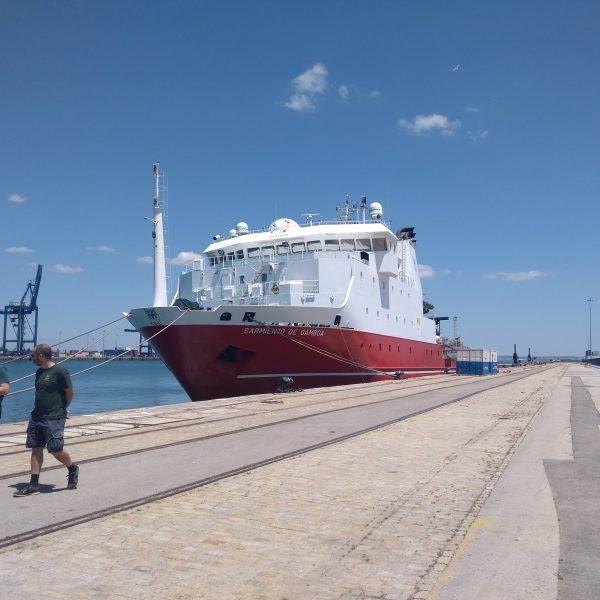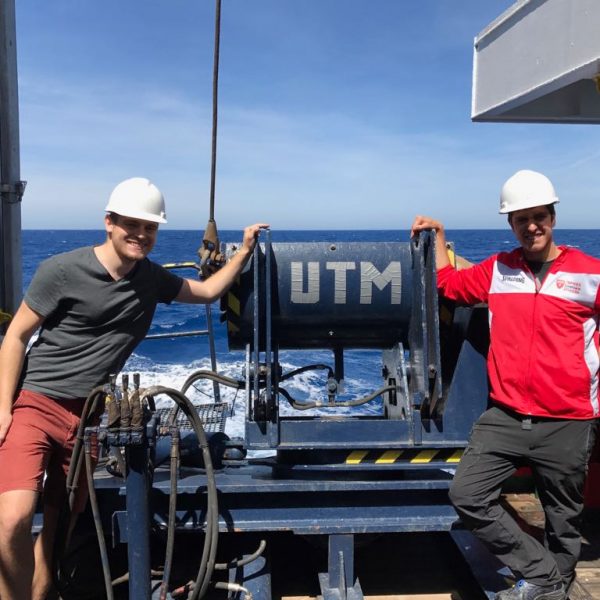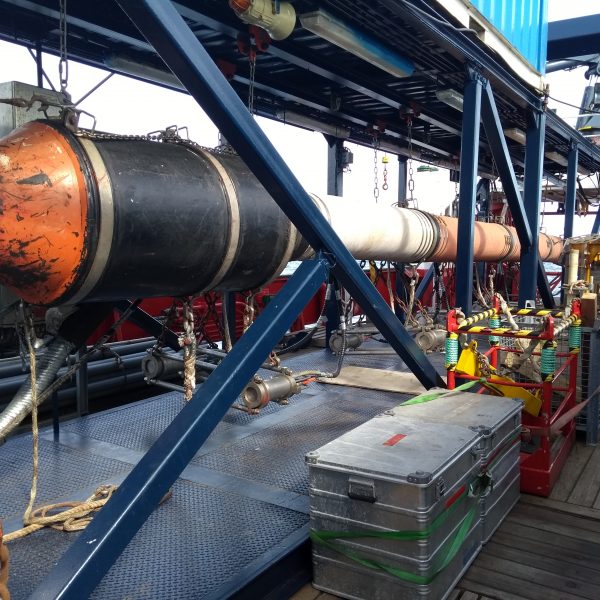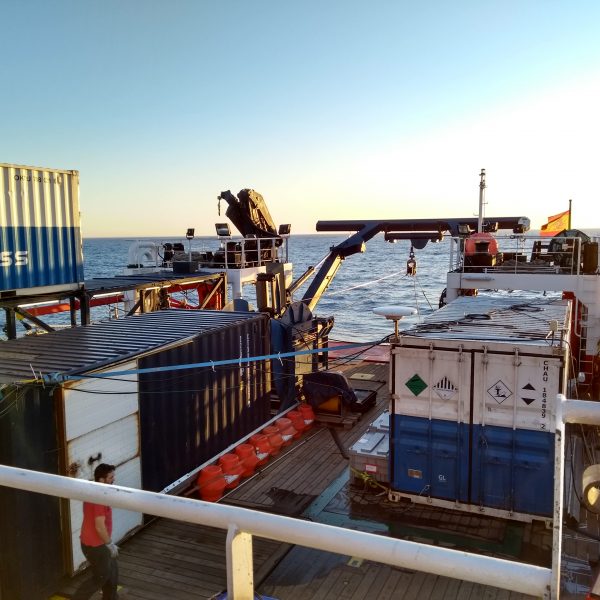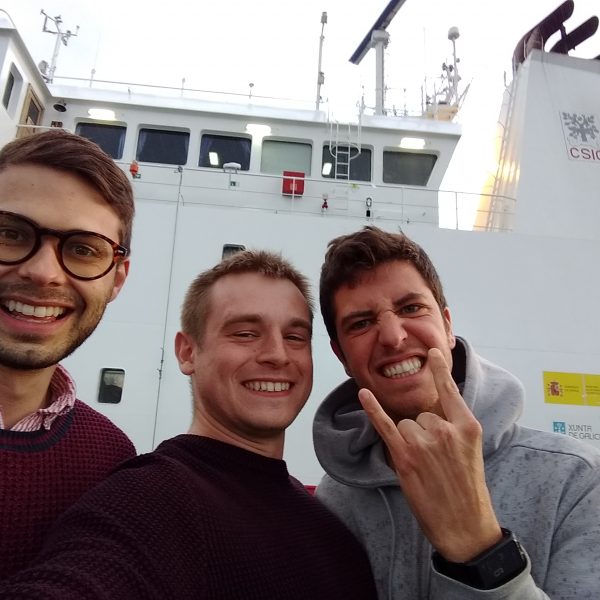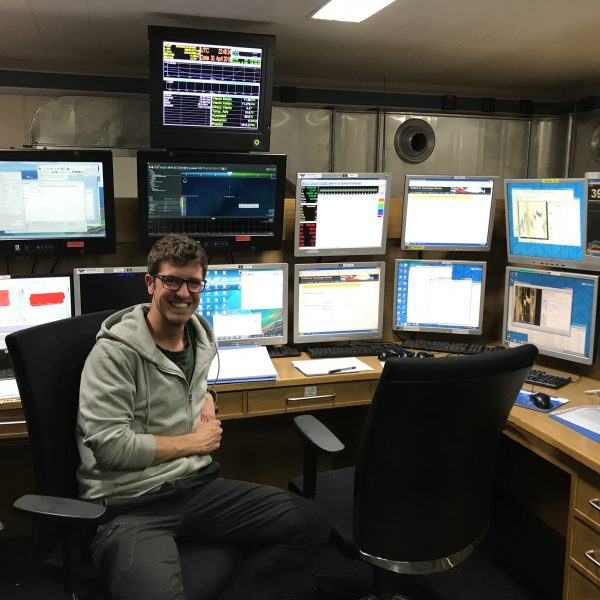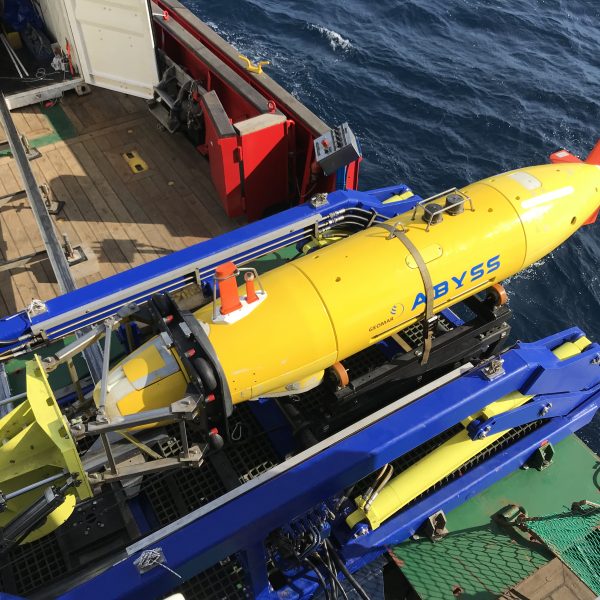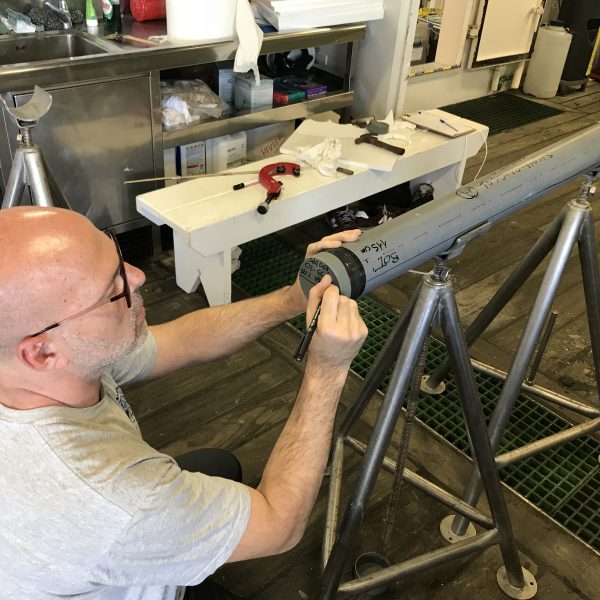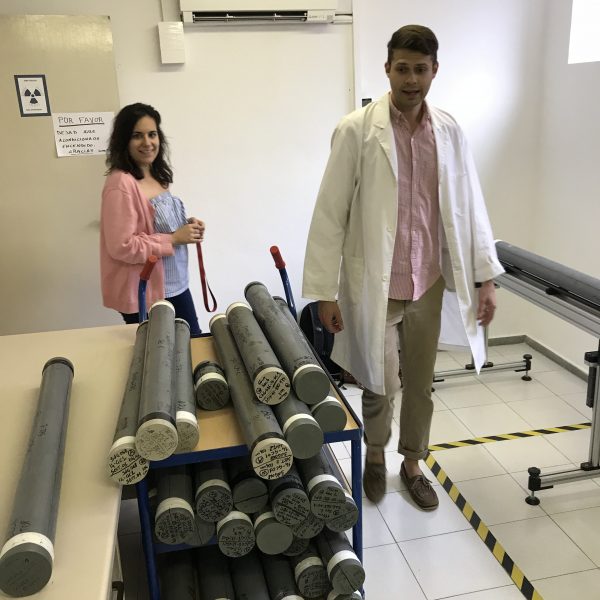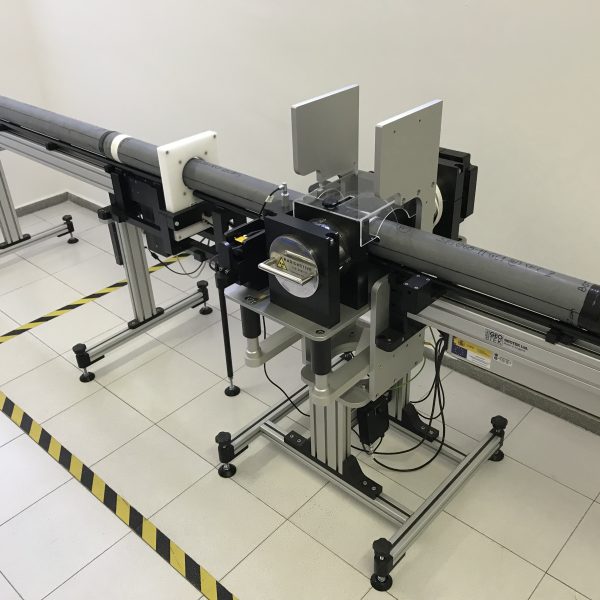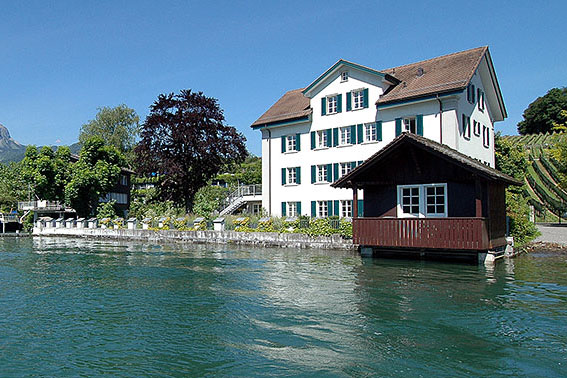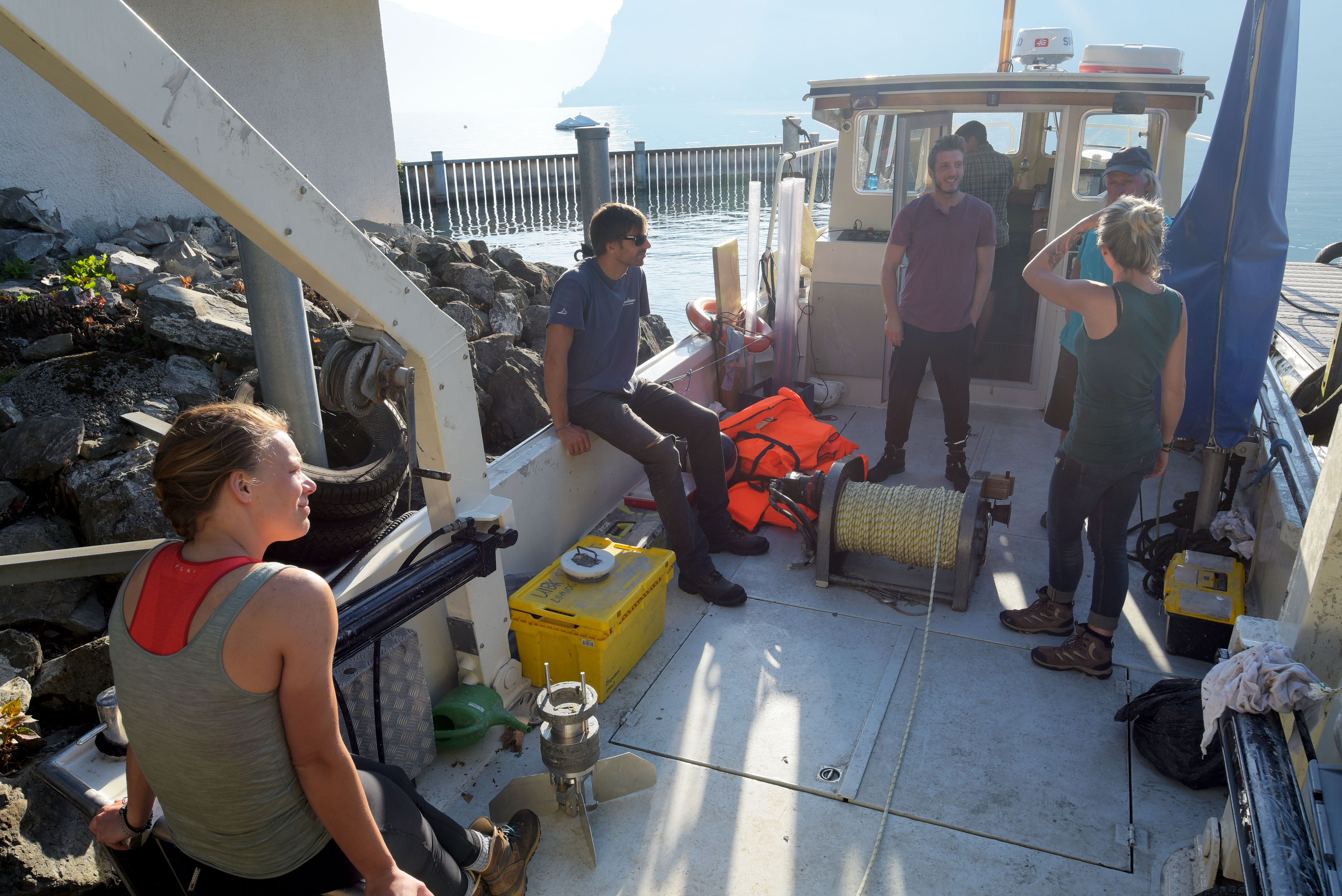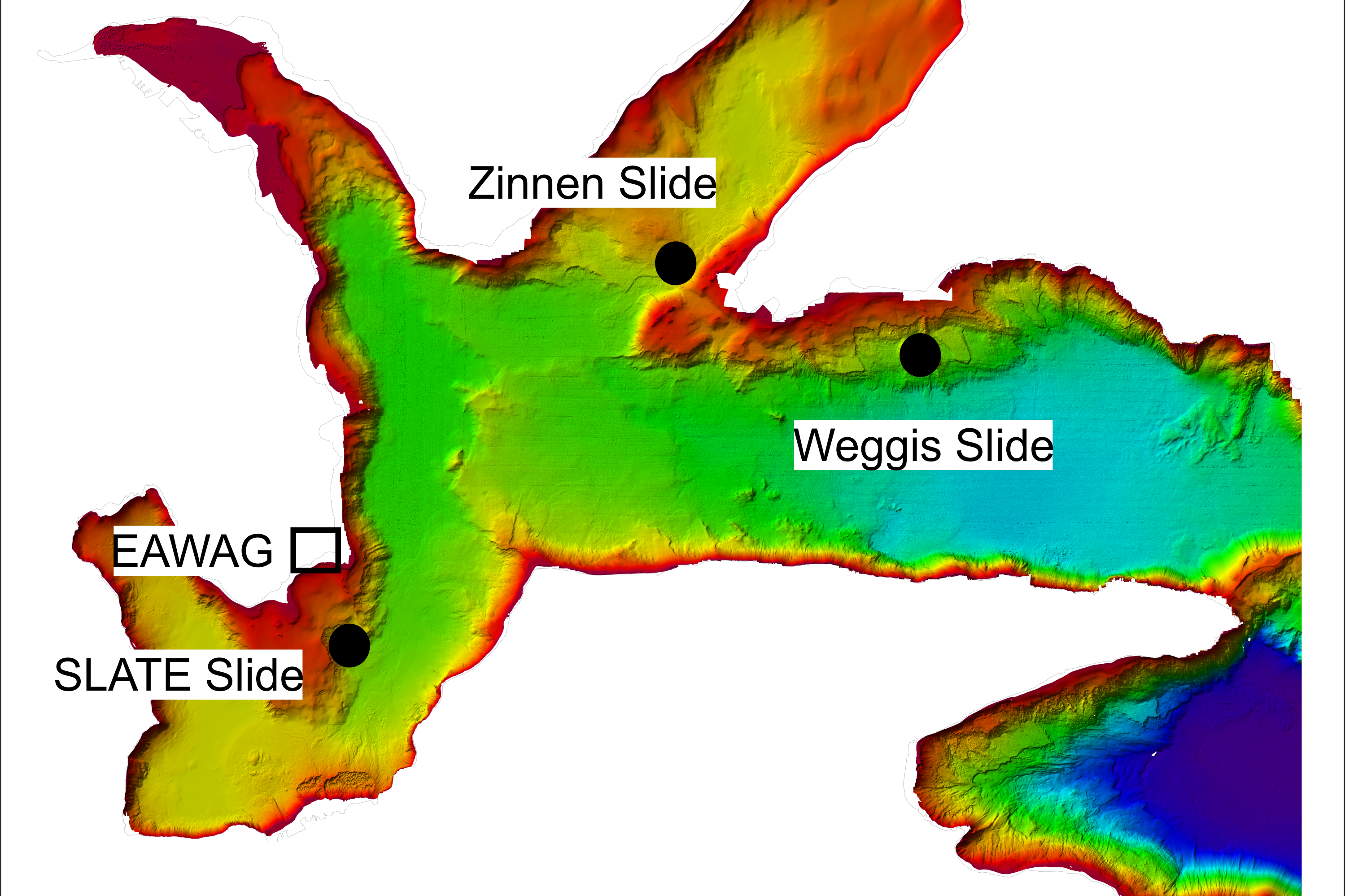ESR 12
@ Vienna, Austria (07 – 12 April 2019) | 2019-07-23
A GUIDE AROUND EGU 2019
ESR1, ESR 2, ESR 3, ESR 4, ESR 5, ESR 6, ESR 7, ESR 8, ESR 9, ESR 12, ESR 13, ESR 14, ESR15 | @ VIENNA, AUSTRIA (7-12 April 2019)
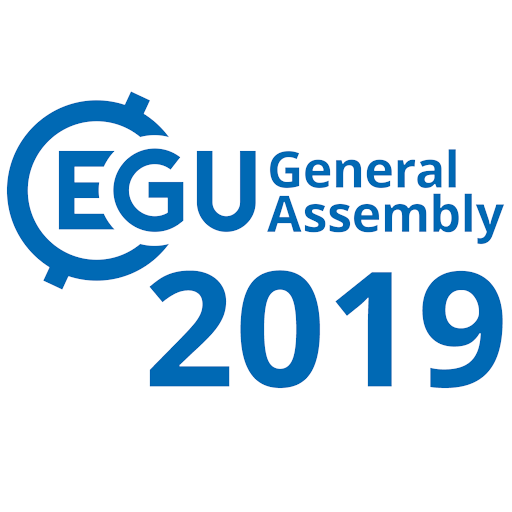
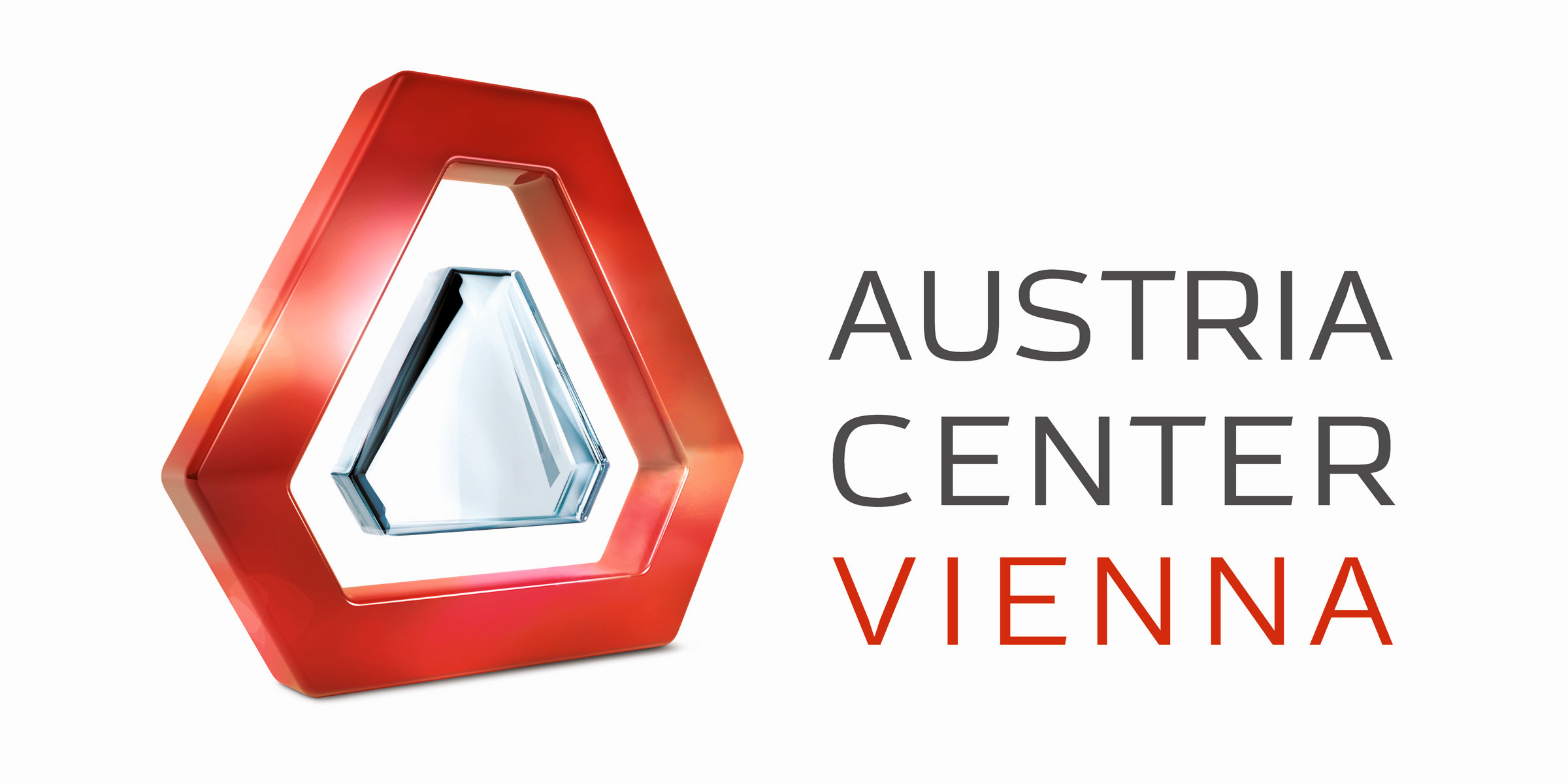
“The EGU General Assembly 2019 was a great success with 5,531 oral, 9,432 poster, and 1,287 PICO presentations that were attended by 16,273 scientists from 113 countries” (Copernicus Meetings, 2019).
SLATE was well represented with 12 PhD candidates, PIs (Achim Kopf, Michael Clare, Carl Harbitz, Finn Lovholt, Michael Strasser) and Aggeliki Georgiopoulou from the advisory board presenting their work.
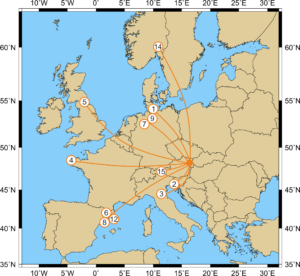
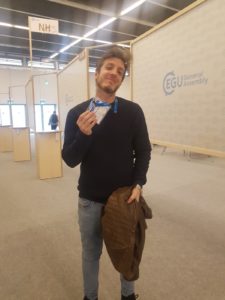 Presenting our work
Presenting our work
Rachel, Jonathan, Tugdual, Shray, Kate, William and Matthias drew crowds of people into the lecture rooms with their amazing presentations. They spoke on a variety of topics; covering different aspects of turbidites and their evolution, contourites and submarine landslides.
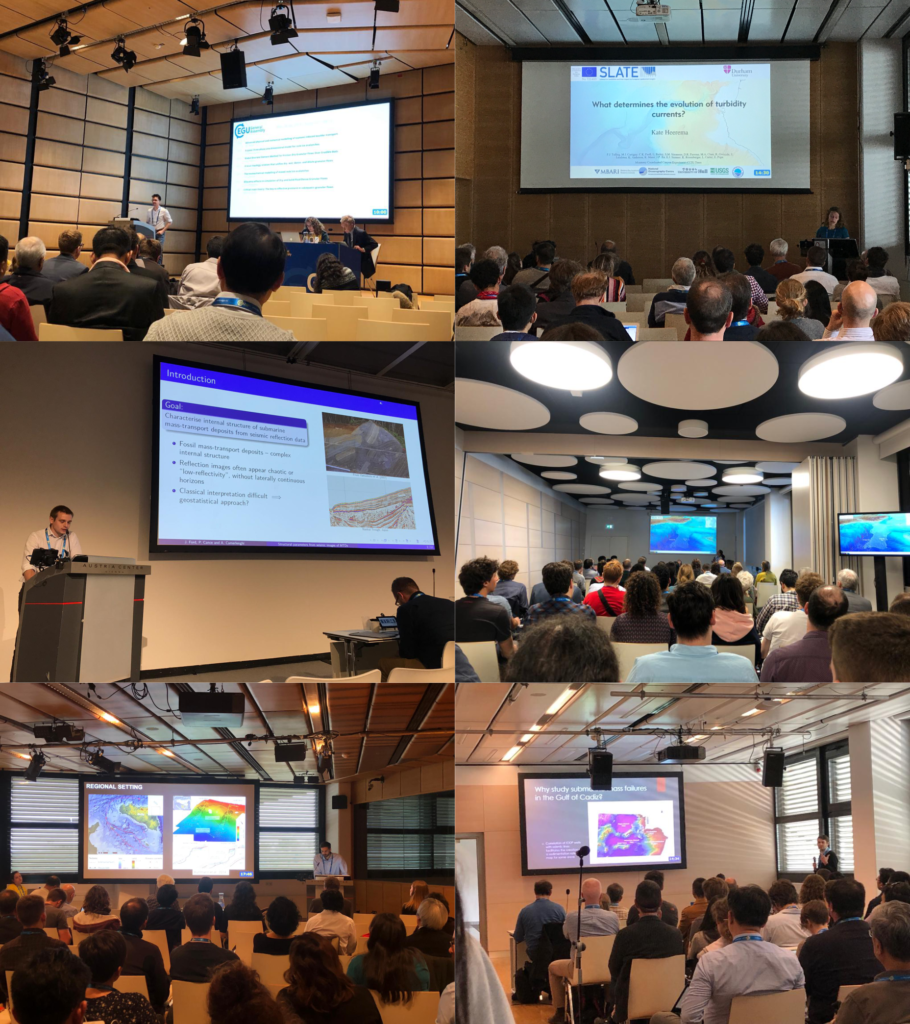 “I was very happy to be able to present my work at this conference, as it gives an occasion to present our work in front of a wide audience with very diverse backgrounds. I came out with very good feedback and advice for my work.” (Tugdual Gauchery, ESR 3)
“I was very happy to be able to present my work at this conference, as it gives an occasion to present our work in front of a wide audience with very diverse backgrounds. I came out with very good feedback and advice for my work.” (Tugdual Gauchery, ESR 3)
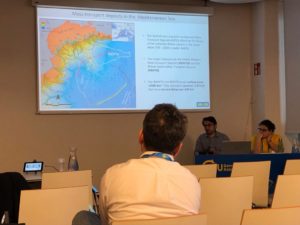
„It was my first time at the EGU and it was overwhelmingly large. I had the opportunity to talk to several researchers after my talk – it is always good to get feedback on both the positive and negative parts of ones research.” (Shray Badhani, ESR 4)
Davide, Ting-Wei, Stefano, Ricarda and Maddalena presented their work in the poster sessions and attracted a lot of people.
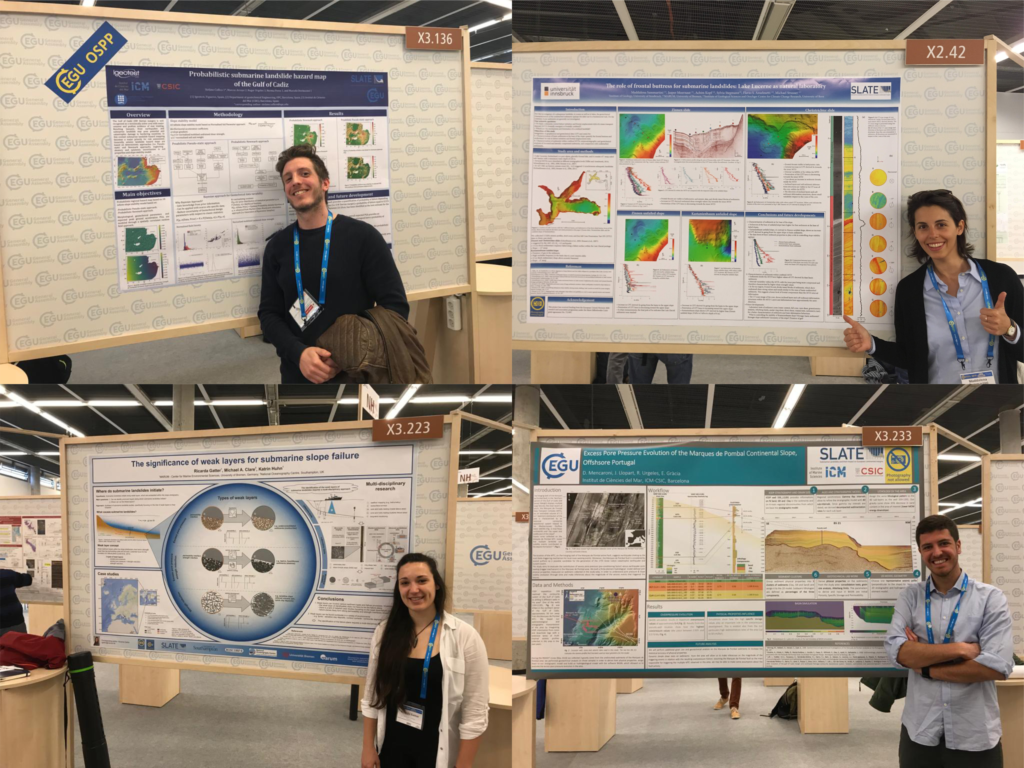
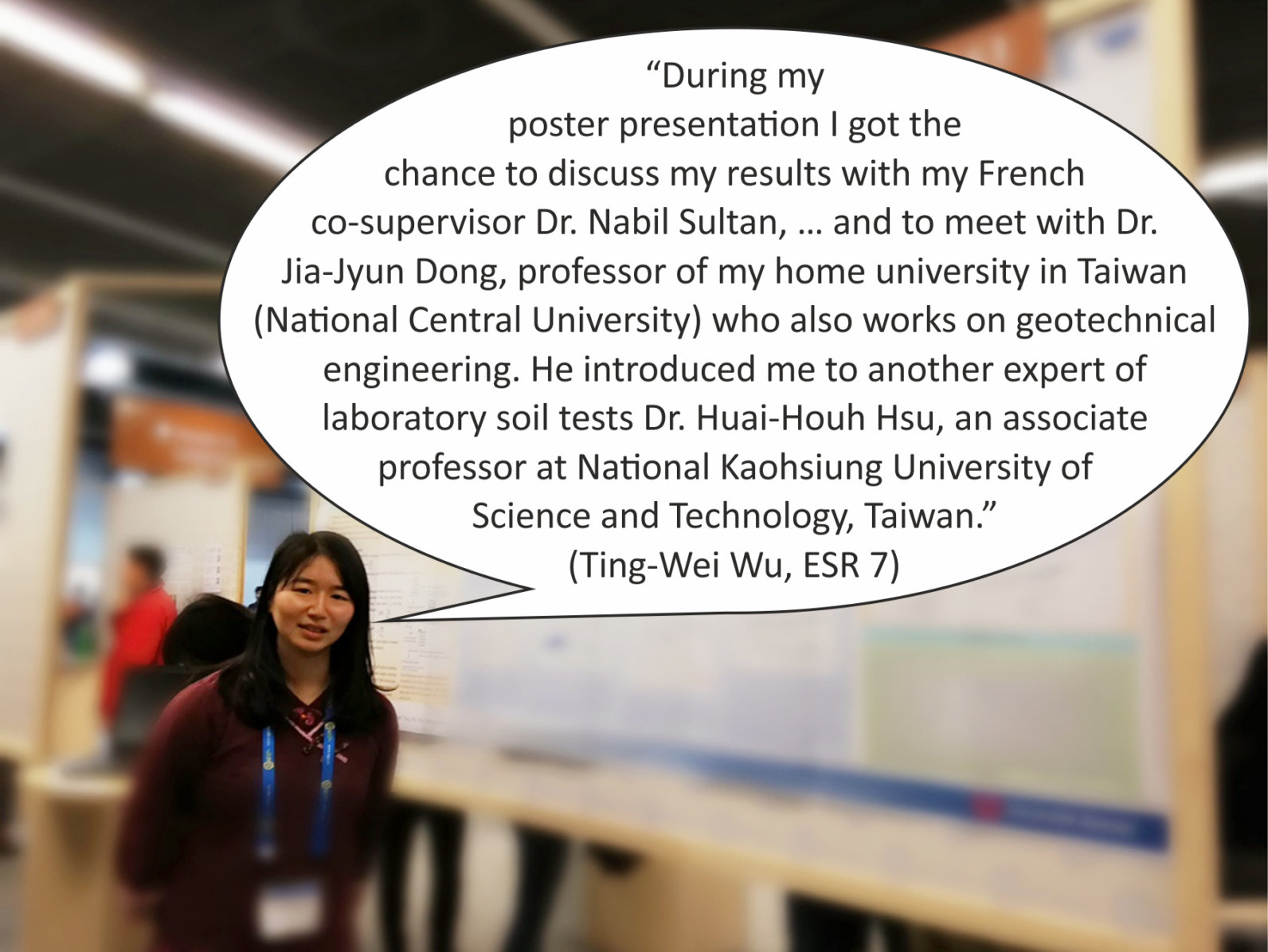
“Presenting a poster at a conference like EGU is a great learning opportunity for any early career scientist. On one hand, I had the chance to discuss my research with people working in the same research field and to meet scientists I had only known from reading their papers. What surprised me the most, however, were the questions I got from scientists specialized in completely different fields, looking at my project from a prospective I do not usually consider. People who were just randomly walking around posters asked me the most challenging questions, highlighting issues that I never considered before, but that helped me to have a more complete understanding of what I am studying.” (Davide Mencaroni, ESR 6)
And learning new thingsApart from presenting our own work, we took the opportunity to learn more about work from outside our own fields. Alongside the traditional poster and oral presentations, EGU also hosts so called “PICO” presentations (Presenting Interative COntent) and short courses on more general topics in science.
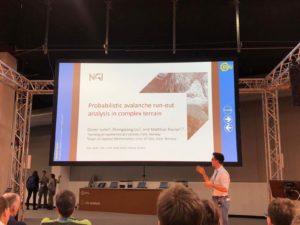
“One thing that I really enjoyed about EGU were the PICO sessions. PICOs start with quick-fire two minute presentations from each researcher to briefly introduce their topic and state their main conclusions. After, everyone moves across to the interactive area, where each presenter has their own workstation and large screen. This really facilitates discussion and allows for more flexibility that a standard poster or talk. For me, the PICO sessions are a great way to be introduced to an unfamiliar area, because the results are presented up front and you get to see a rapid cross section of the state-of-the-art in a particular field.” (Jonathan Ford, ESR 2)
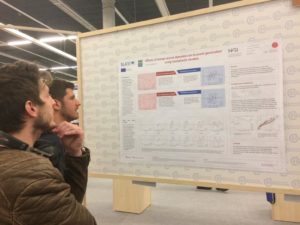
“It was a great opportunity to get some insights from overlapping, but vastly different, fields. For instance to see what the current state of research in Powder Snow Avalanches is, or to get some background knowledge on numerical modelling in turbidity currents as preparation for my secondment at NGI.” (Kate Heerema, ESR 5)
“One of the most exciting sessions I attended was on the recent tsunami events in Sulawesi and West Java (Krakatao), Indonesia (Blog). Although most of the group seemed to agree that these tsunami events were, in fact, submarine landslide-related, there was some surprisingly lively pushback from at least one seasoned researcher. I think the overall tsunami community seems to be experiencing a small paradigm shift in how they think about tsunami hazards. I also enjoyed stopping by different poster sessions related to tsunami hazards and had some great networking conversations with a group of researchers from Singapore about their work and how it relates to some tsunami survey work that I previously did as a master’s student” (William Meservy, ESR 12)
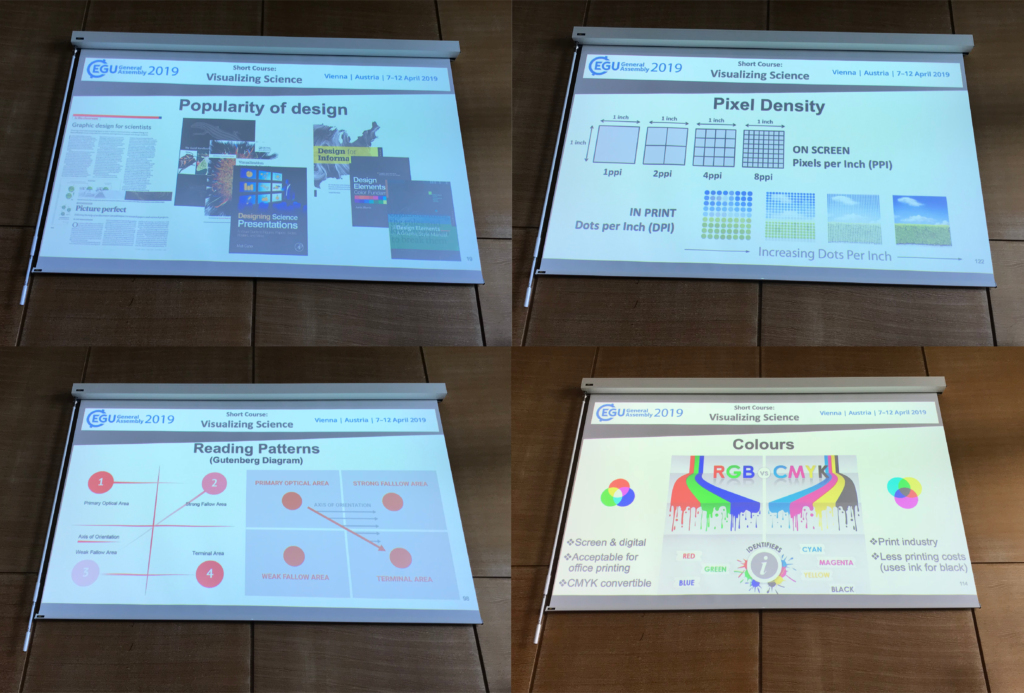
“I went to three courses, of which I especially liked the “Visualizing Science” course. I think we often forget how important it is to present our research to other scientists, as well as to the general public.” (Ricarda Gatter, ESR 9)
“The quantity and variety of soft skill courses available at the EGU undoubtedly adds value to the conference. I attended a course about communicating science with the general public and enjoyed hearing different perspectives about what effective communication looks like, and how that can take different forms. One point that stood out was the value of knowing when it is worthwhile to get the assistance of people who are trained in communication, such as journalists, to communicate significant results.” (Rachel Barrett, ESR 1)
Need help to find your way around? - use the EGU AppFinding your way around a big conference such as EGU can be difficult. Luckily, there was an app available in which you could find all the contributions and put together your personal programme. In addition, we kept everybody up to date with our own contributions via Twitter.
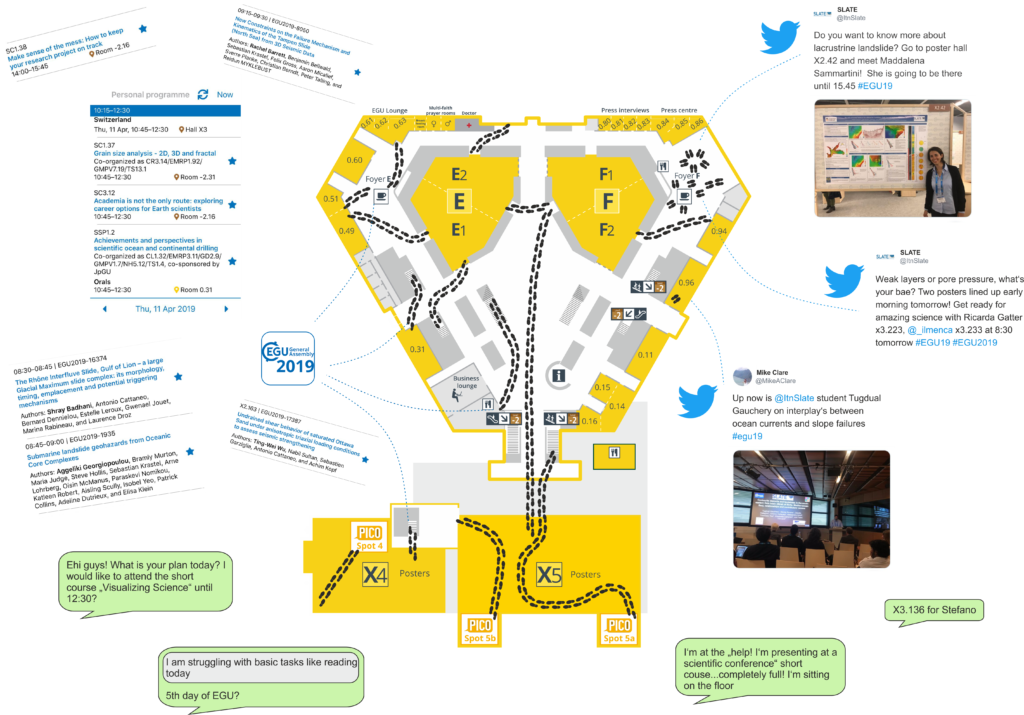
“I knew that EGU is the most important Geoscience conference in Europe, but I didn’t expect something like this. It was difficult not to be impressed by the amount of different topics and talks, but above all, I was struck by the hundreds of posters that everyday are hanging in these huge rooms.” (Maddalena Sammartini, ESR 15)
To sum it up“I was honestly impressed by the EGU conference. It was the perfect environment to discuss a wide range of research topics and learn about other researchers’ PhD experiences.” (Stefano Collico, ESR 8)
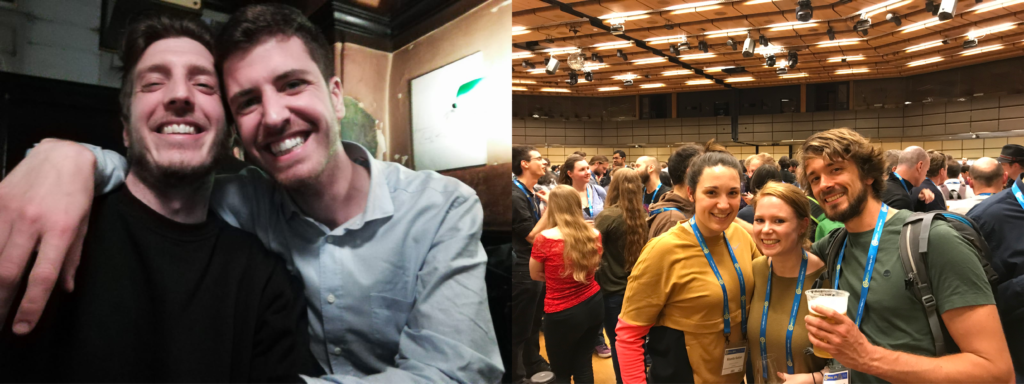
“It is such a great international experience. I even met my friends from my home university in India. I am already looking forward to EGU2020.” (Shray Badhani, ESR 4)
“One of the highlights of the experience for me was that I was lucky enough to be able to bring my wife and kids along to explore Vienna. In the evenings, we were able to walk in the city together and eat a lot of goulash and Viennese chocolate cake” (William Meservy, ESR 12)
“EGU is an essential event for every geoscientist working Europe. It is the perfect opportunity to meet new people with common interests, present the latest progress of your work, get valuable feedback and to foster old friendships” (Matthias Rauter, ESR 14)
EGU - Let's meet again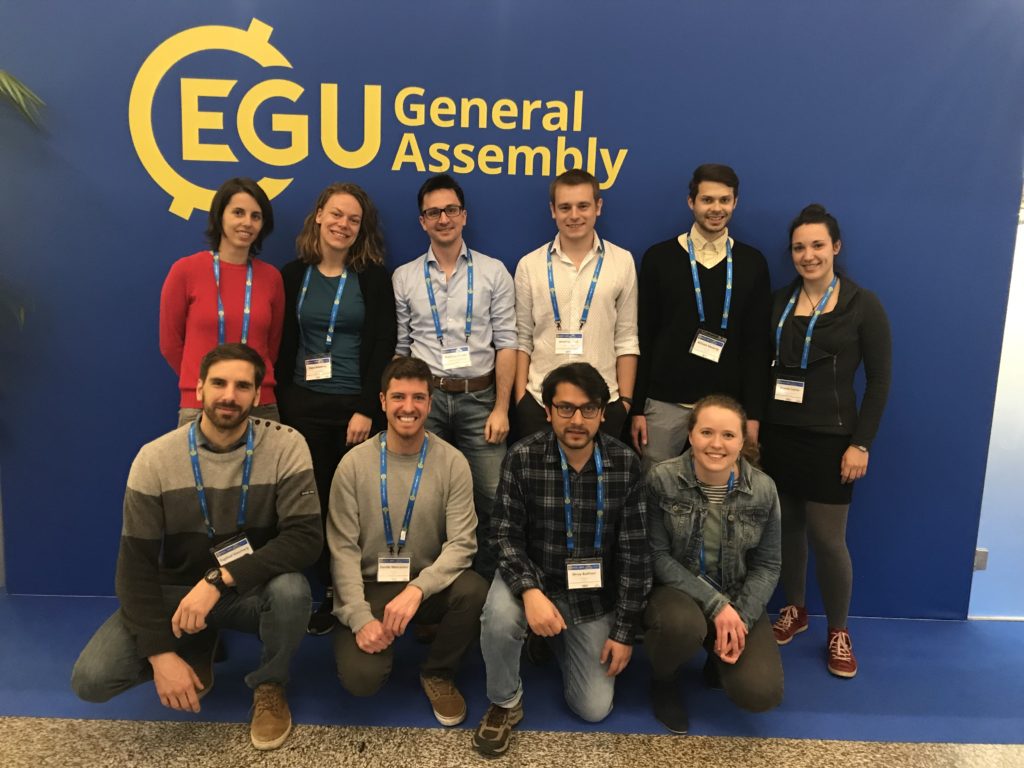 Location
Location
- Vienna, Austria
 Conference Schedule
SLATE participants
ESRs:
Conference Schedule
SLATE participants
ESRs:
- R. Barrett, ESR1 [Talk]
- J. Ford, ESR2 [Talk]
- T. Gauchery, ESR3 [Talk]
- S. Badhani, ESR4 [Talk]
- K. Heerema, ESR5 [Talk]
- D. Mencaroni, ESR6 [Poster]
- T-W Wu, ESR7 [Poster]
- S. Collico, ESR8 [Poster]
- R. Gatter, ESR9 [Poster]
- W. Meservy [Talk]
- T. Zengaffinen, ESR13 [Poster]
- M. Rauter, ESR14 [Talk]
- M. Sammartini, ESR15 [Poster]
- A. Kopf, PI of ESR7 [Poster]
- M. Clare, PI of ESR10 [PICO]
- C. Harbitz, PI of ESR13
- F. Løvholt, PI of ESR14 [Poster]
- F. Løvholt, PI of ESR14 [Convener]
- M. Strasser, PI of ESR15
- A. Georgiopoulou, Advisory Board [Talk]
expert courses | 2018-10-16

Lake Lucerne Workshop - Expert courses
Jonathan Ford (ESR2), Monika Wiebe (ESR11), William Meservy (ESR12) | @ EAWAG Kastanienbaum, Switzerland (9-16 September 2018)
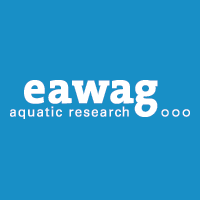
Aside from doing science, the annual workshops are an opportunity for the group to participate in specific training courses together. During the Lake Lucerne workshop, two members of The Catalyst—an improv comedy and science communication collective—visited to deliver courses focused on better communicating our work to the scientific community and the wider public.

“Established in 2012 in Lausanne, Switzerland, The Catalyst is a group of scientific researchers and professionals that uses entertainment as a means of engagement with the public.”
Presentation Skills for Scientists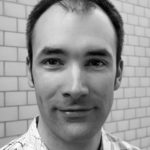 Samuel Lagier
Scientist / Science Communicator
Samuel Lagier
Scientist / Science Communicator
The presentation skills course started with a simple task: say your name and an object that you like and why you like it. The aim of this was for Samuel Lagier to learn our names, but also to show us how to create connections between a presenter and an audience—in this case through short personal stories. We then went on to discuss what makes a talk bad, and the basics of how to make a talk good. The main message of this course was to help us understand that a presenter is in a lot of ways like a mountain tour guide: they first need to be well prepared so that the whole group can arrive at the goal. In the case of the presenter this means that the audience has received and understood the message, for the success of a talk depends on what the audience gets out of it.
In order to make his own talk successful, Samuel applied various practical methods, such as challenging us to explain our research in less than ten words without technical terms, and to present this in front of the others. We also developed short stories as a group that highlighted how we as human beings tend to be interested in conflict and resolution. We as presenters should consider that a good way to relate our science to the audience is to show them the problem/challenge/question and then the solution.
Science communication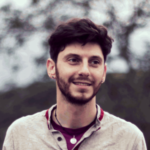 Robbie I'Anson Price
Filmmaker / Scientist / Science Communicator
Robbie I'Anson Price
Filmmaker / Scientist / Science Communicator
Communicating your work is perhaps one of the most important (and often overlooked) jobs of any scientist. Day 1 of this course challenged us to think about how we can effectively communicate our work to different parts of society: the general public, policy makers, business leaders and journalists. Submarine landslides are a significant geohazard, but much of the public are not even aware that they exist. As geoscientists we have an important role to play in communicating risk and information about natural hazards to the wider public.
The second day of the course Robbie took us out of our comfort zones and asked us to plan some scientific outreach—in the form of a short YouTube-style video. For many of us this was the first time even considering making a video about our work.
Robbie invited us all to apply to participate in the Exposure Science Film Hackathon, a three-day course designed to bring together scientists and filmmakers. The goal of the course is for each participating group to create a short but engaging film that communicates their science to a non-scientist audience. For further information about this project, application instructions and examples of previous films, please click here.
Related blog posts from the 'Lake Lucerne Workshop' blog series Location- EAWAG Kastanienbaum
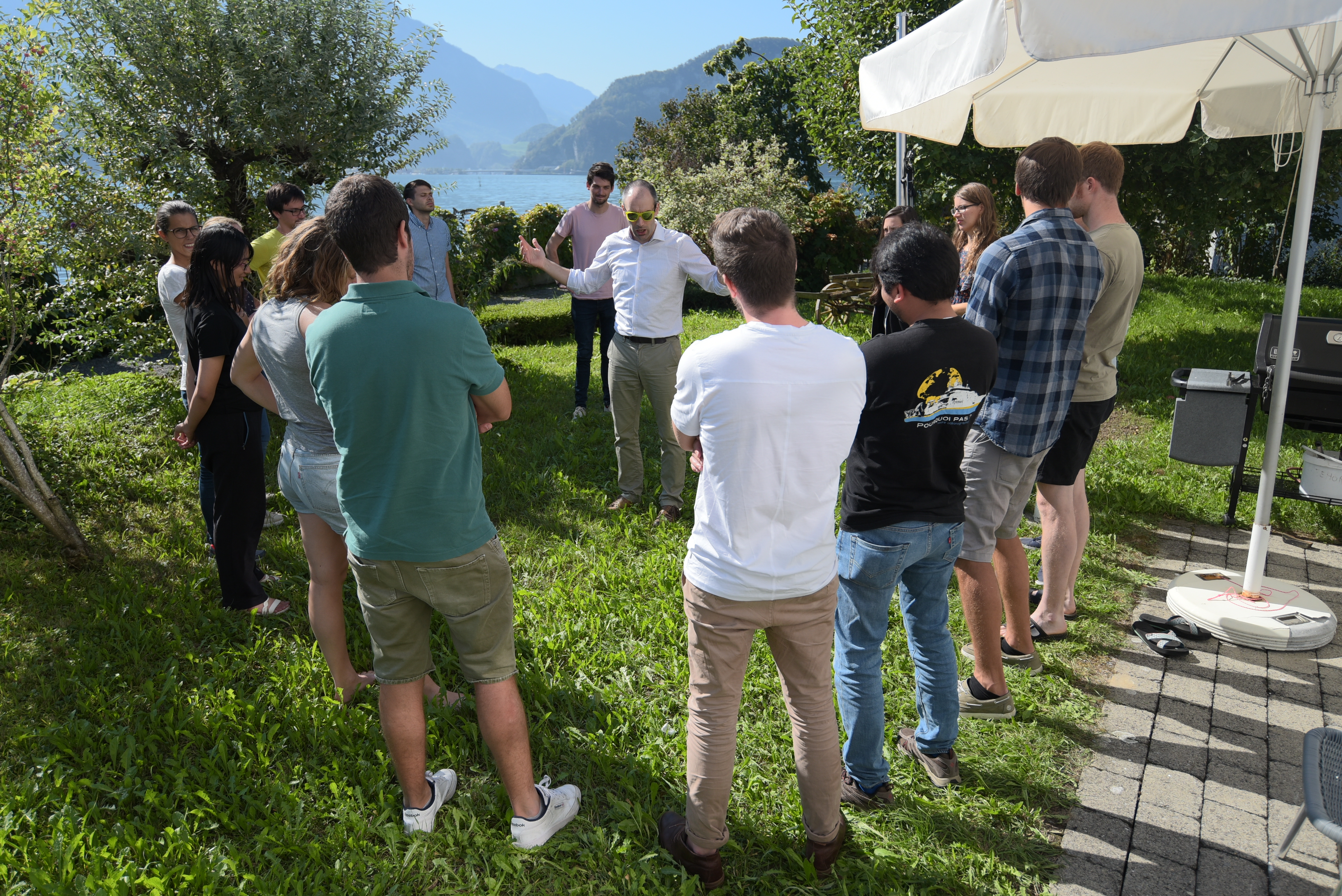
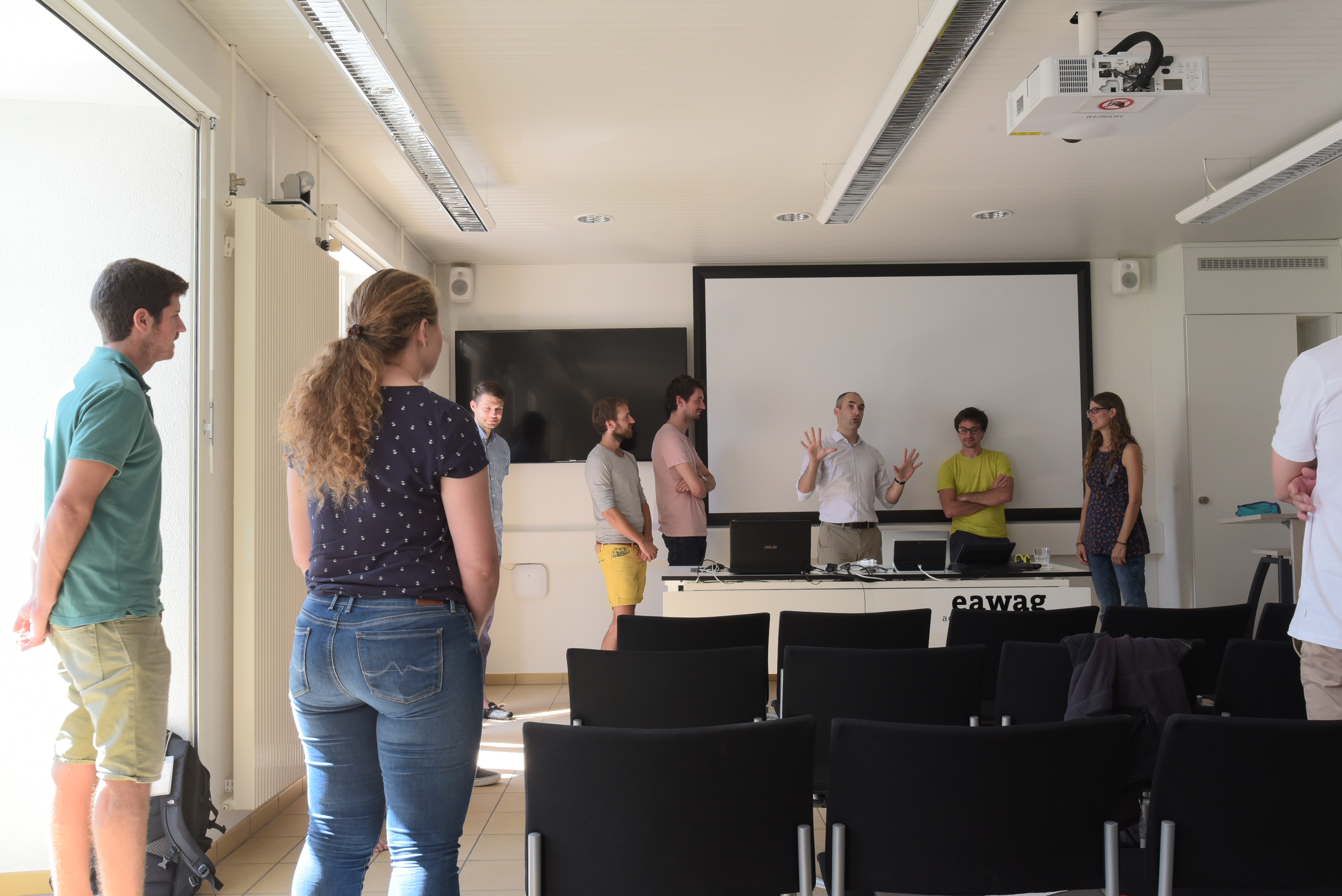
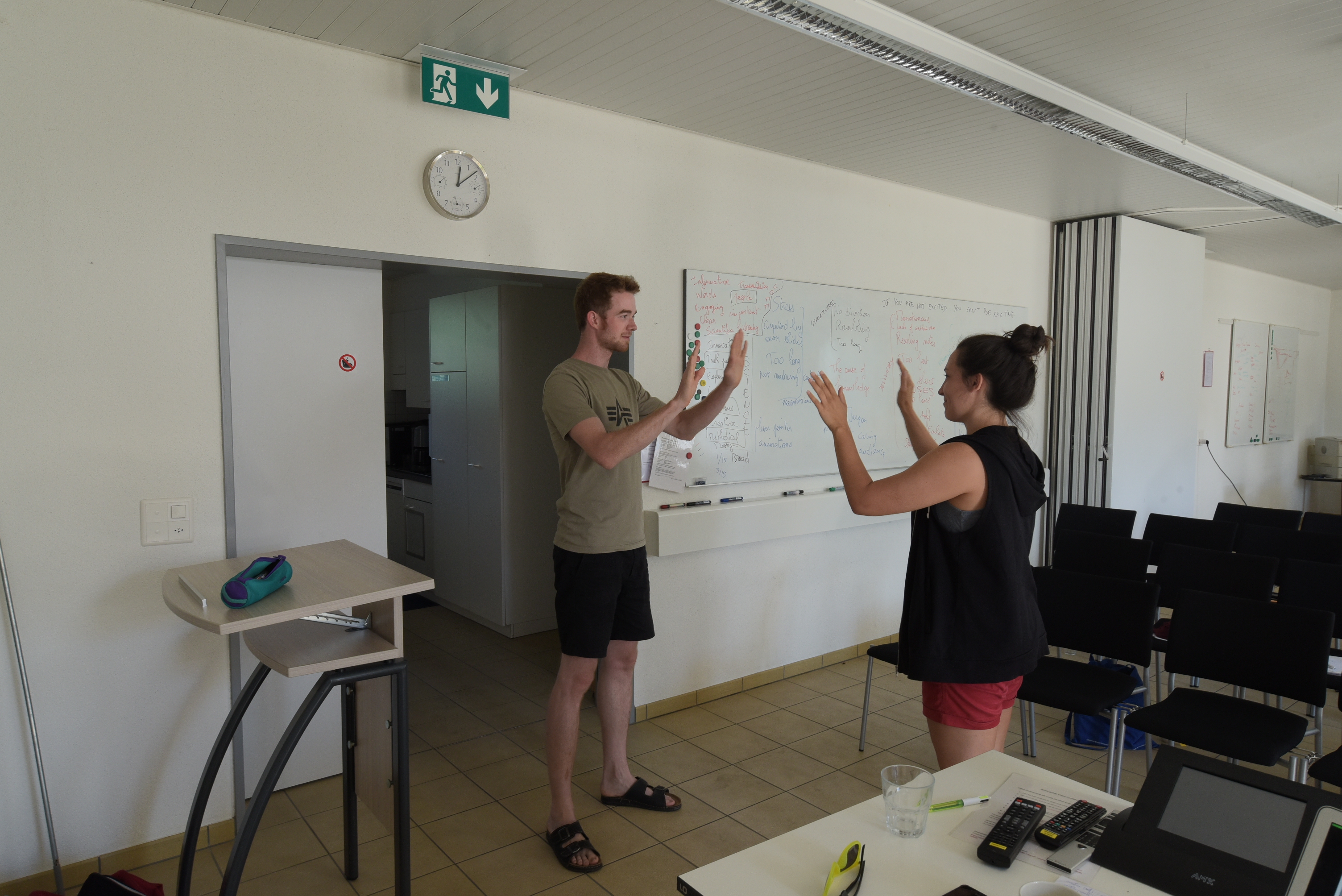
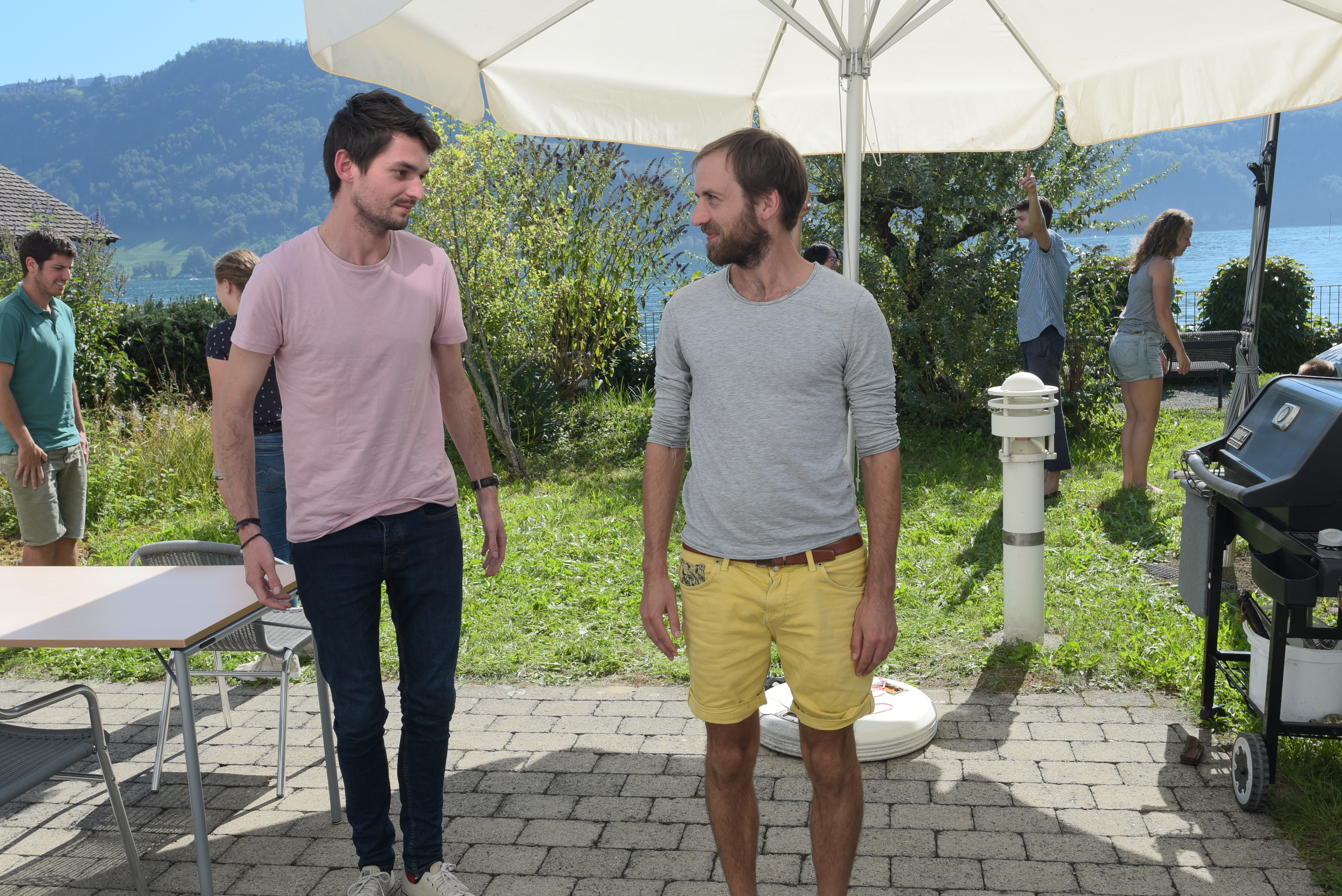
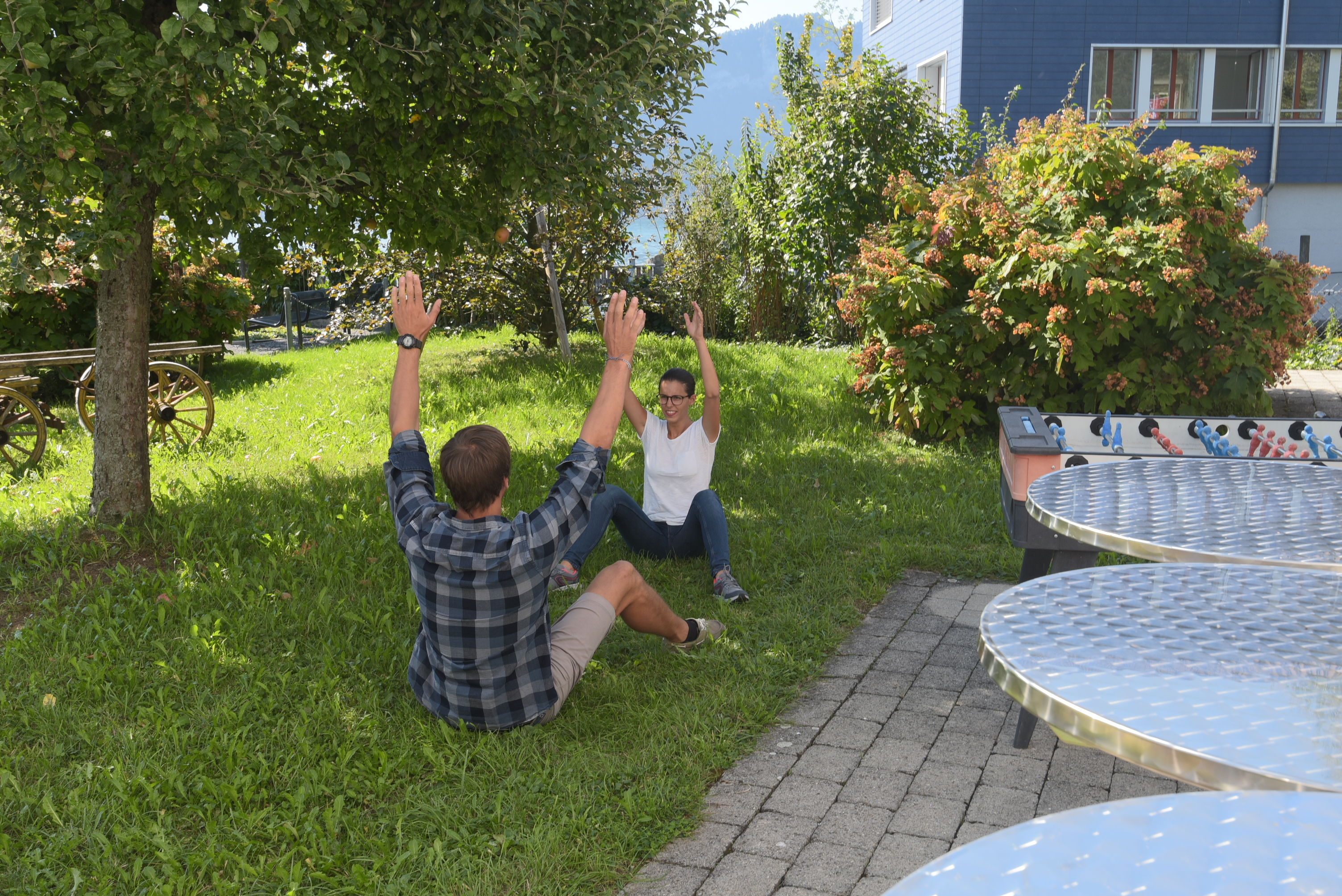
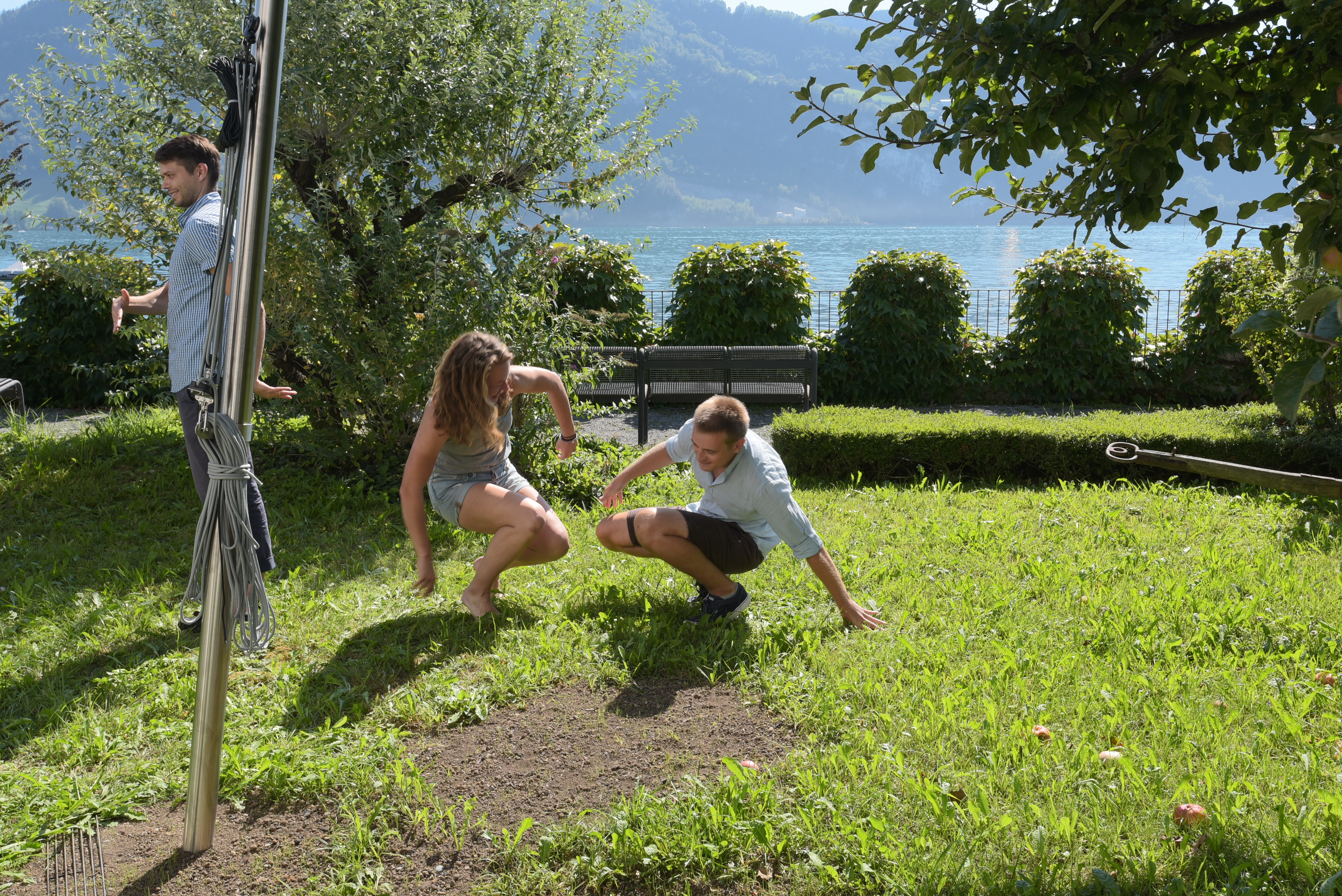
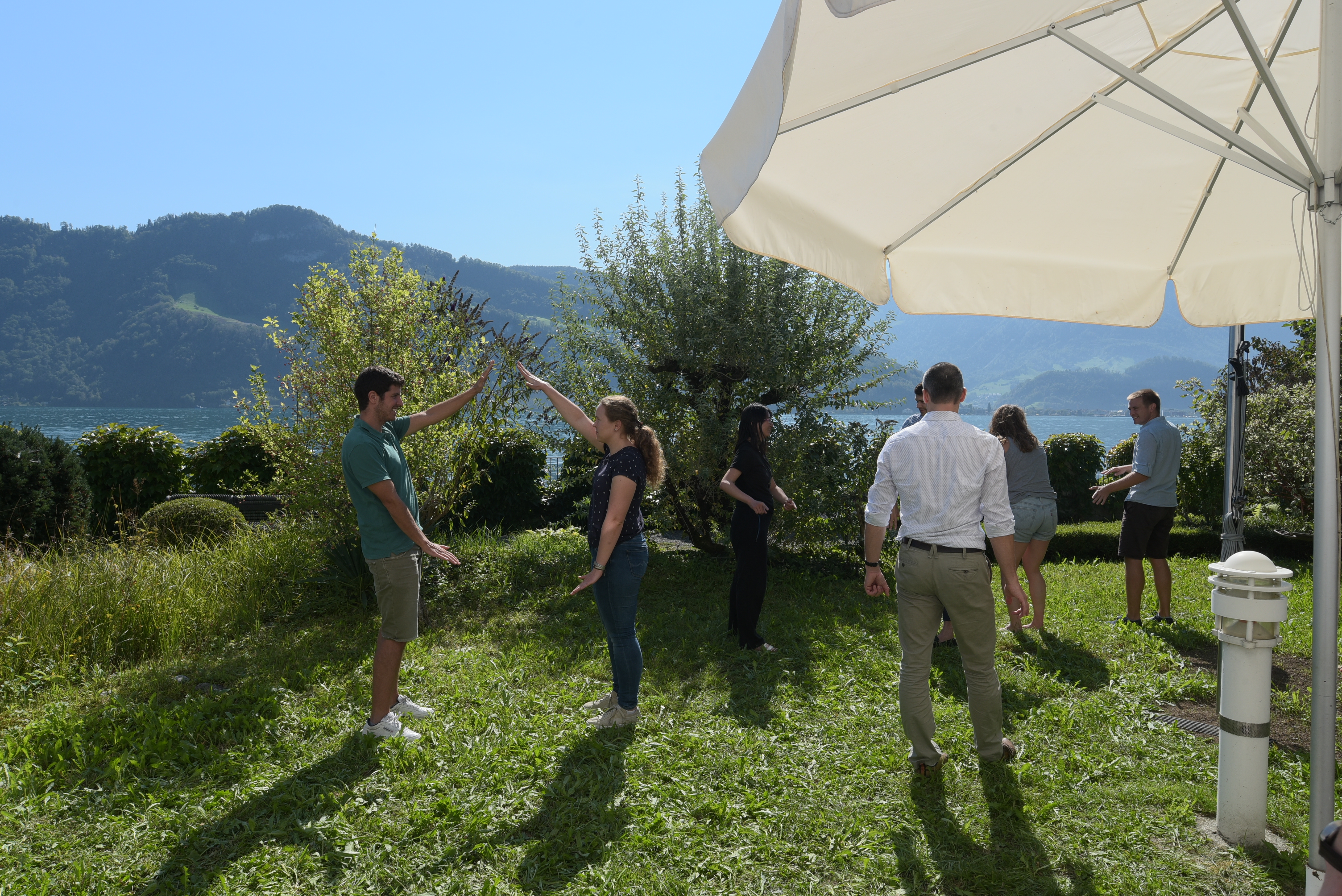
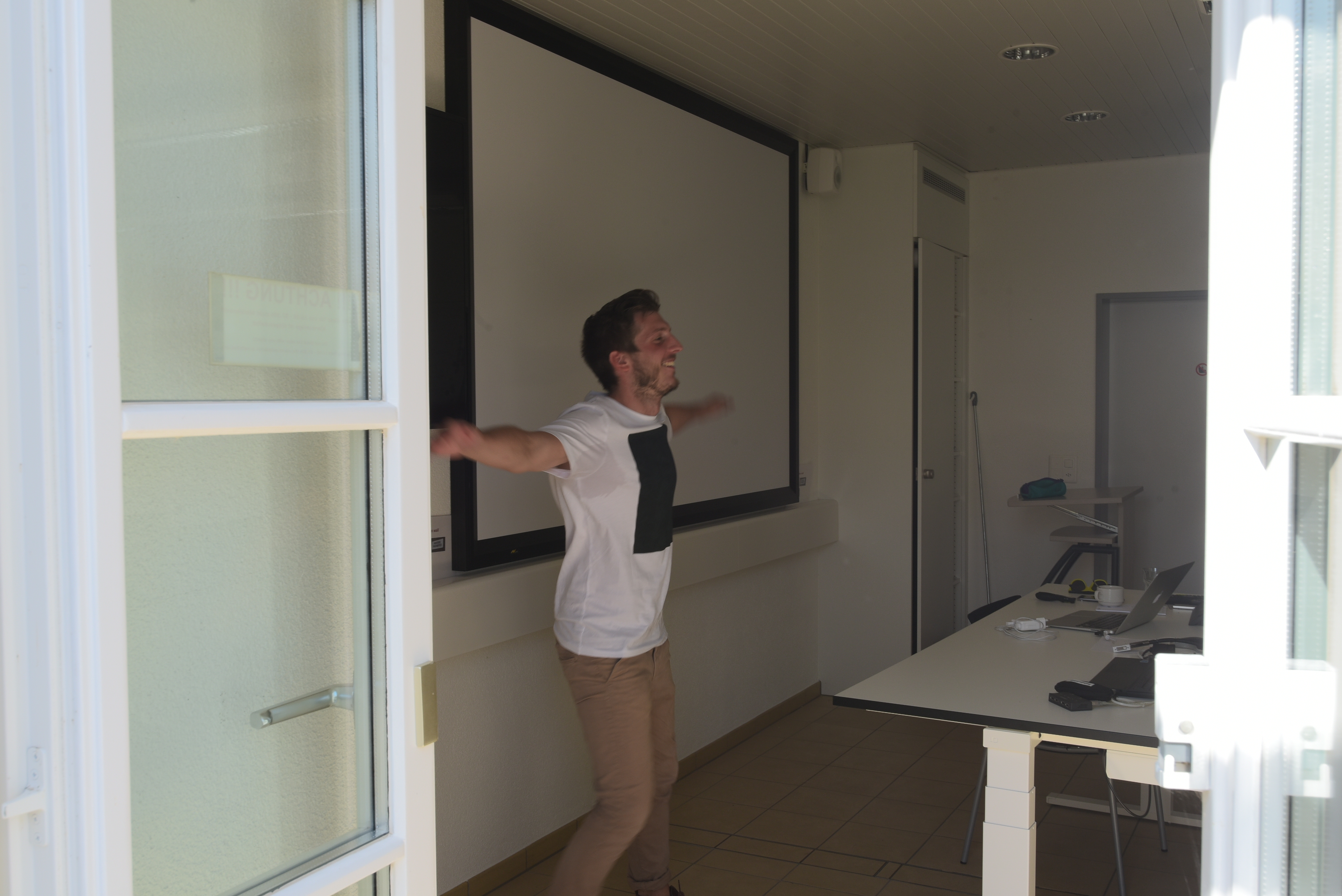
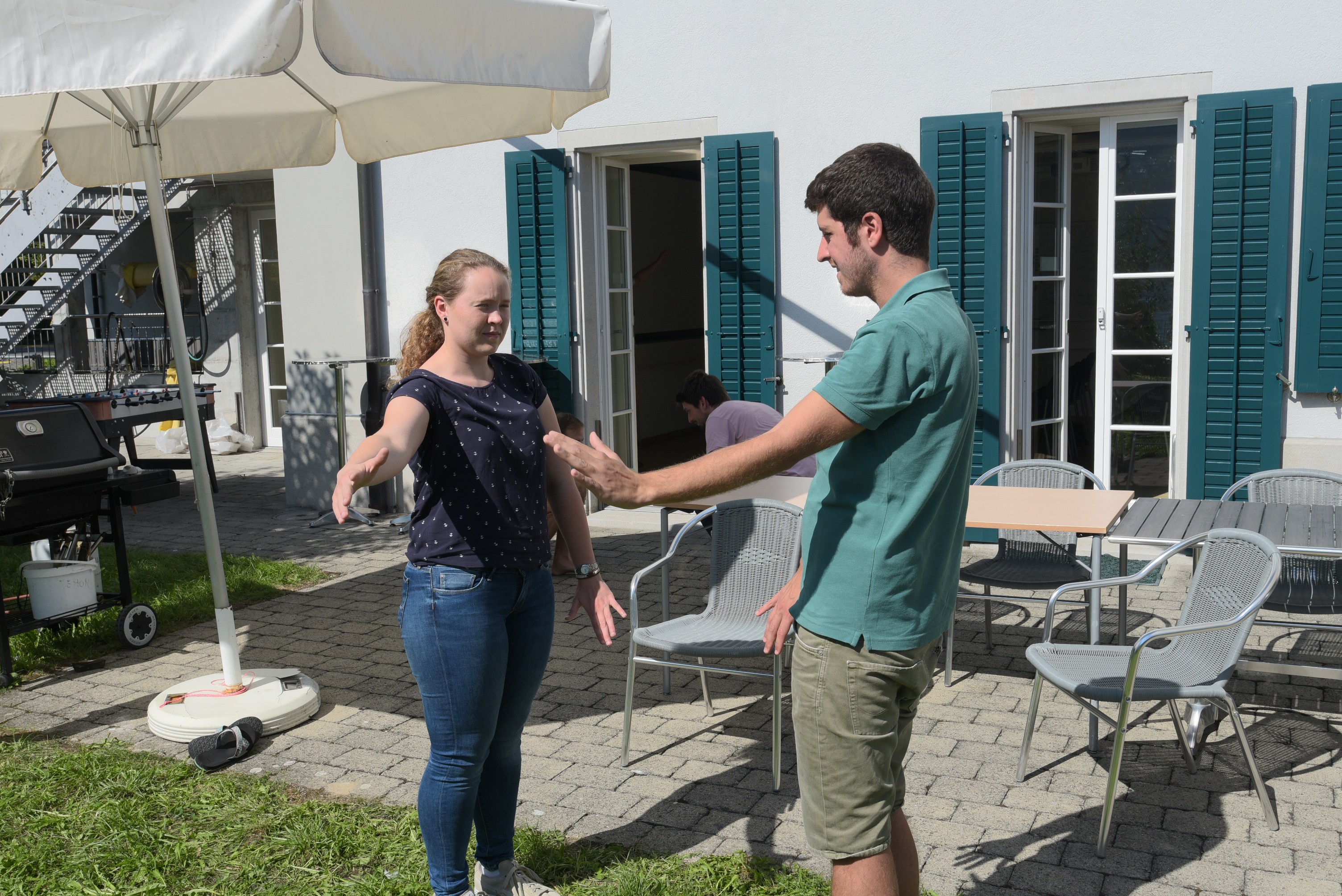
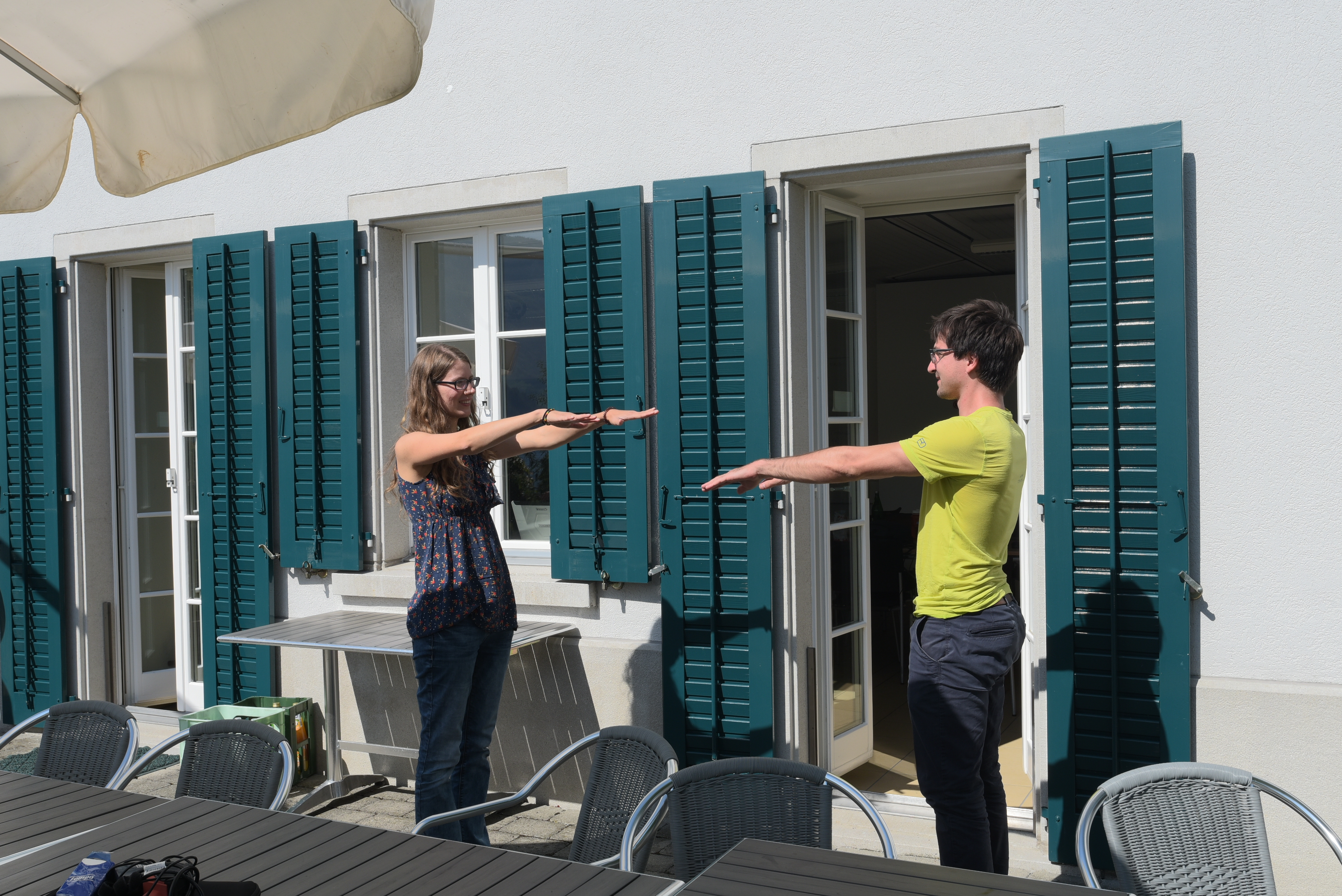
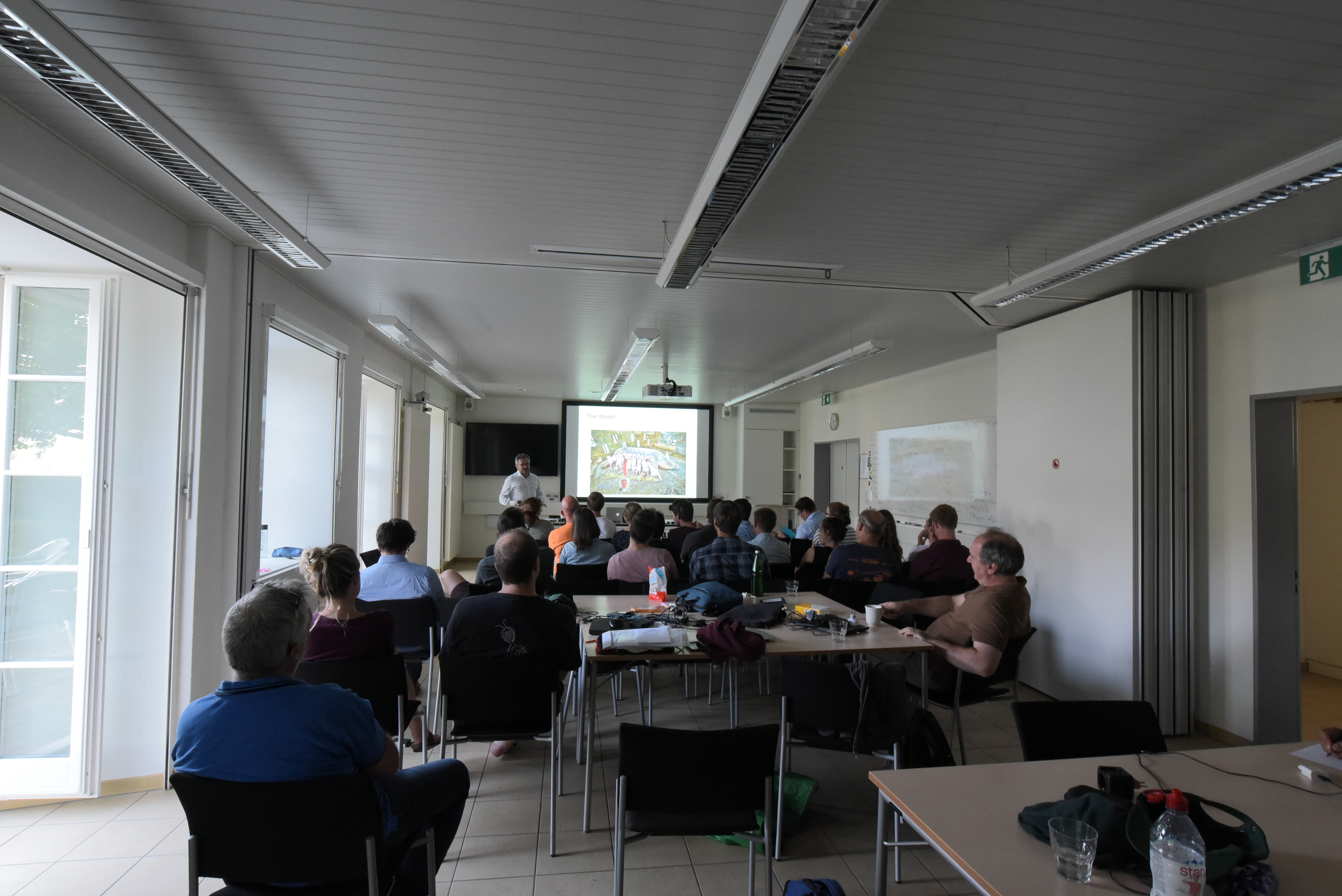
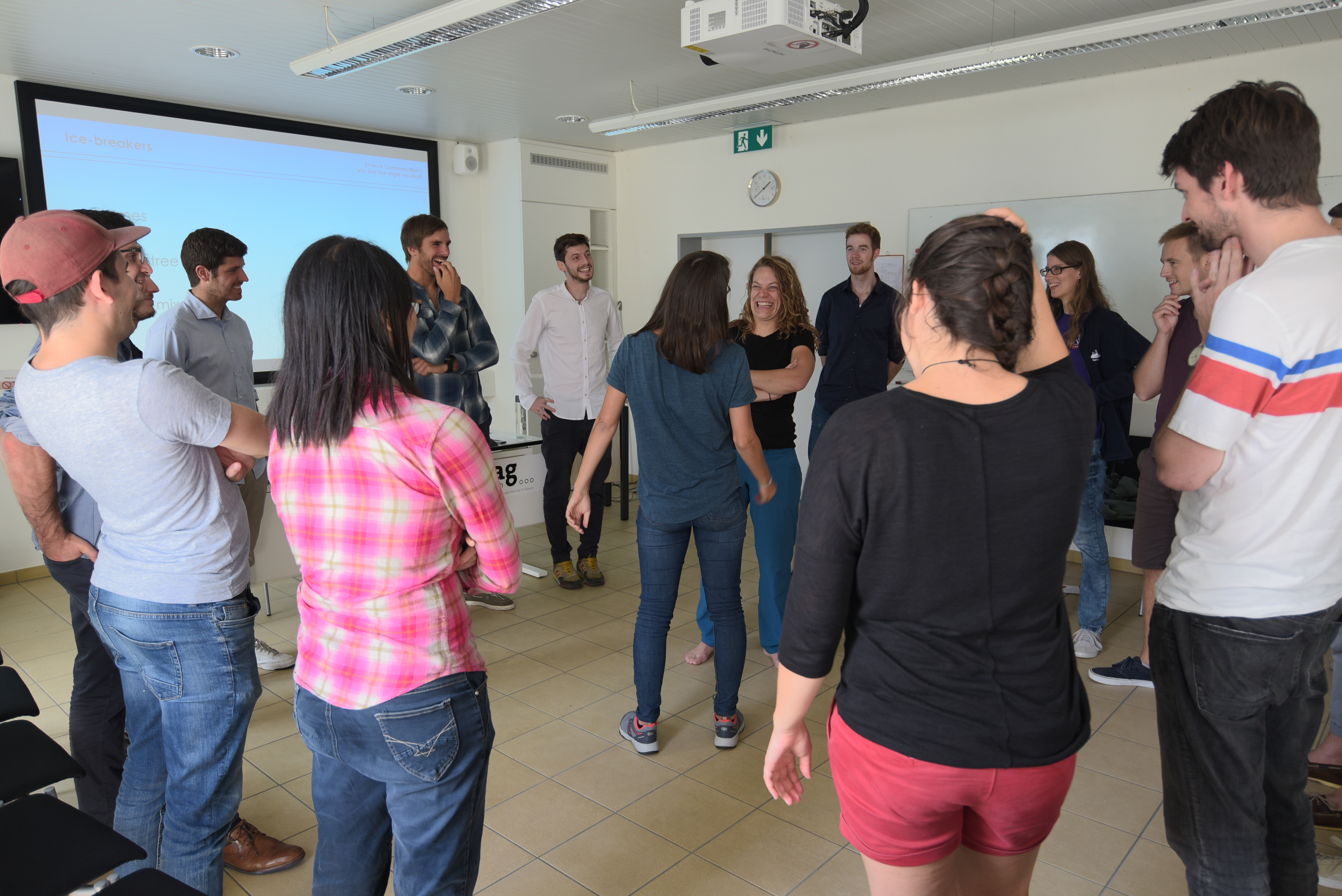
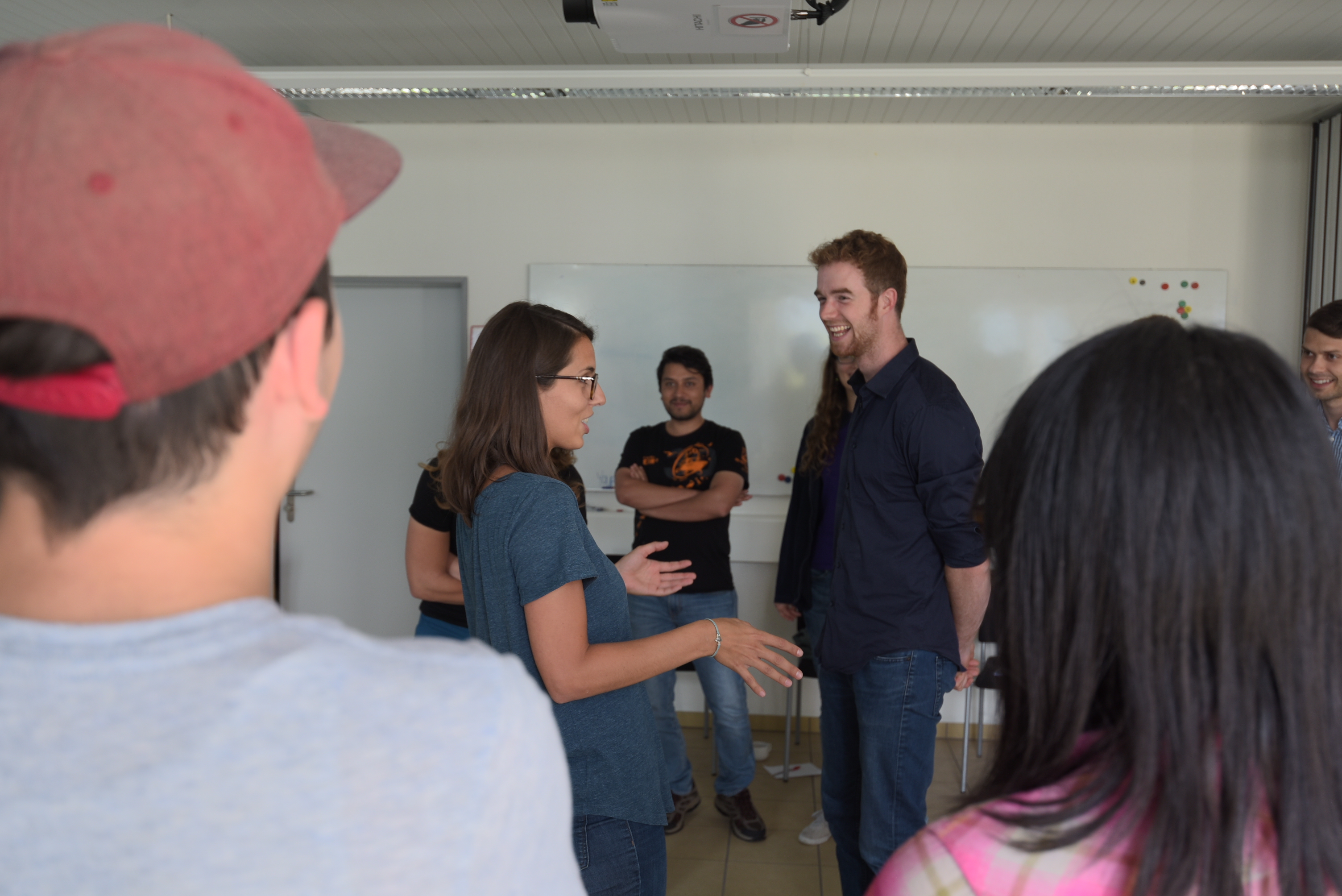
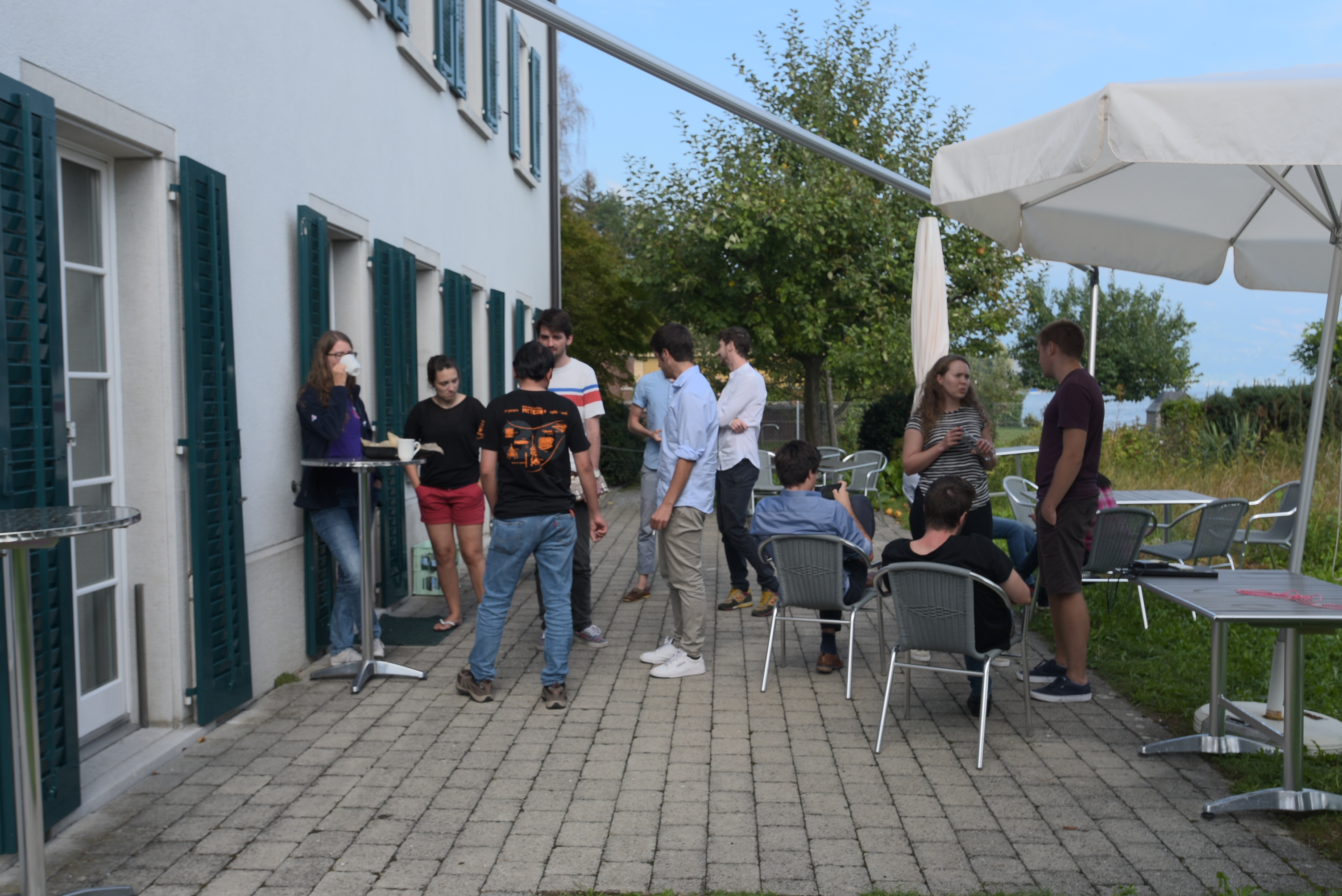
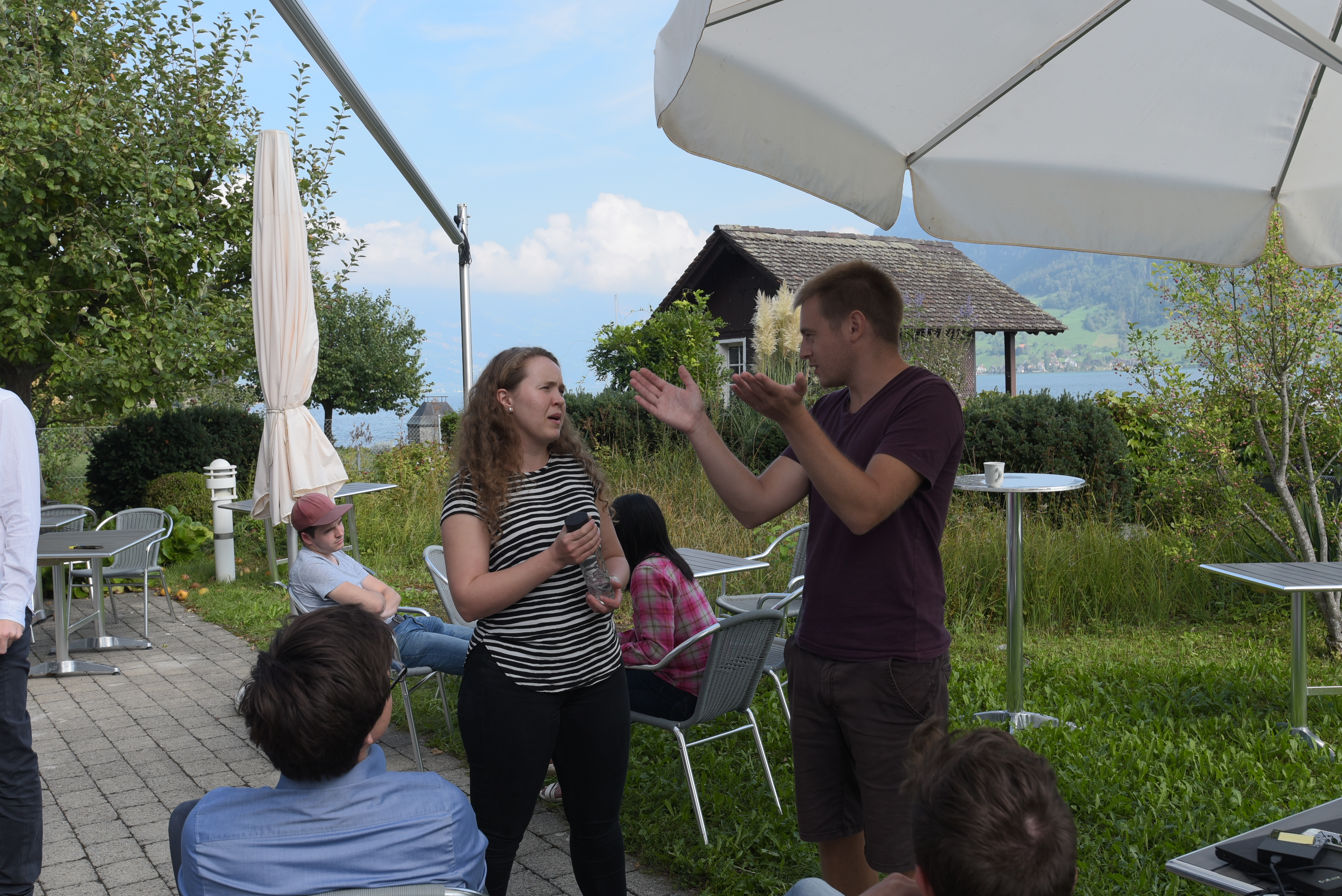
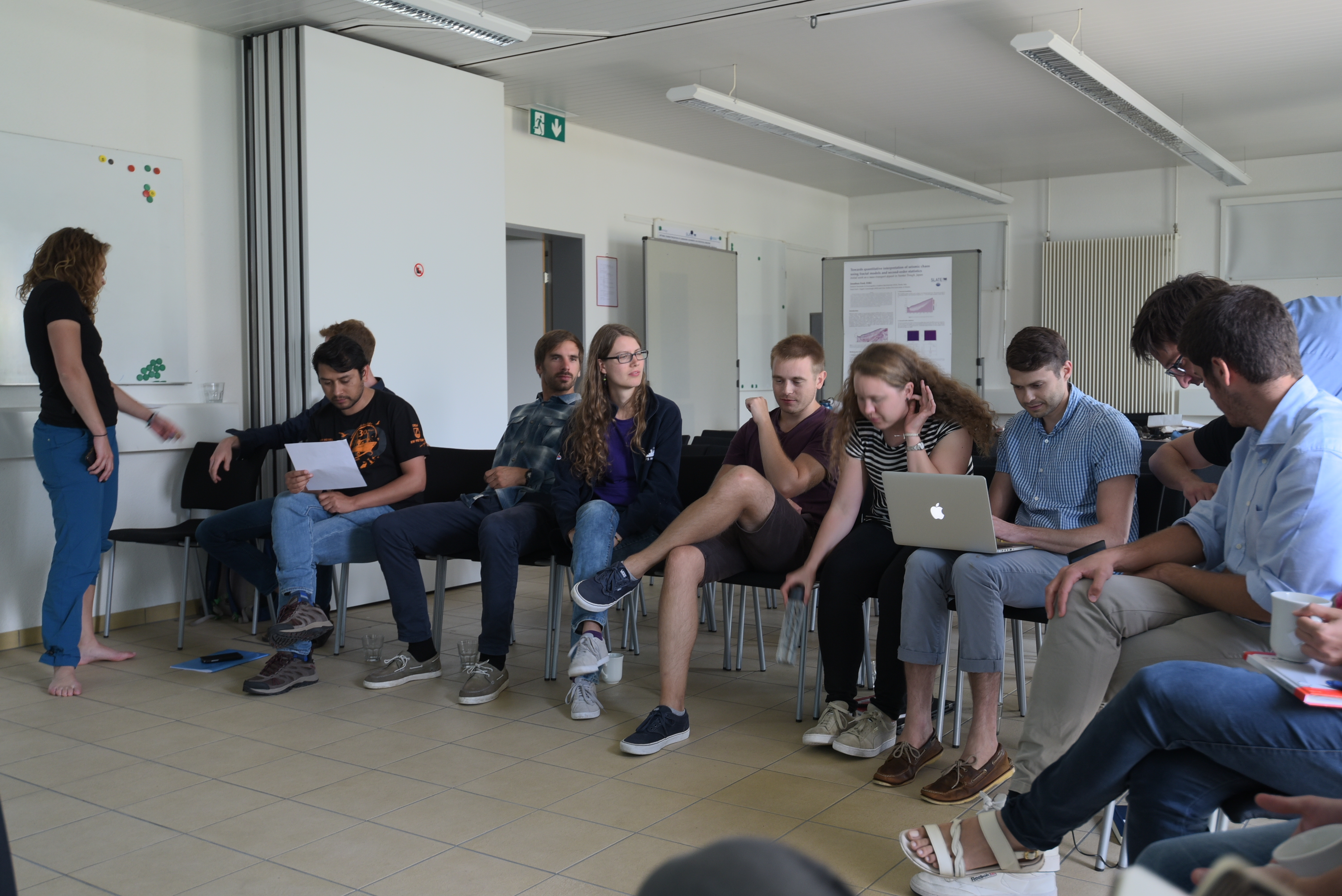
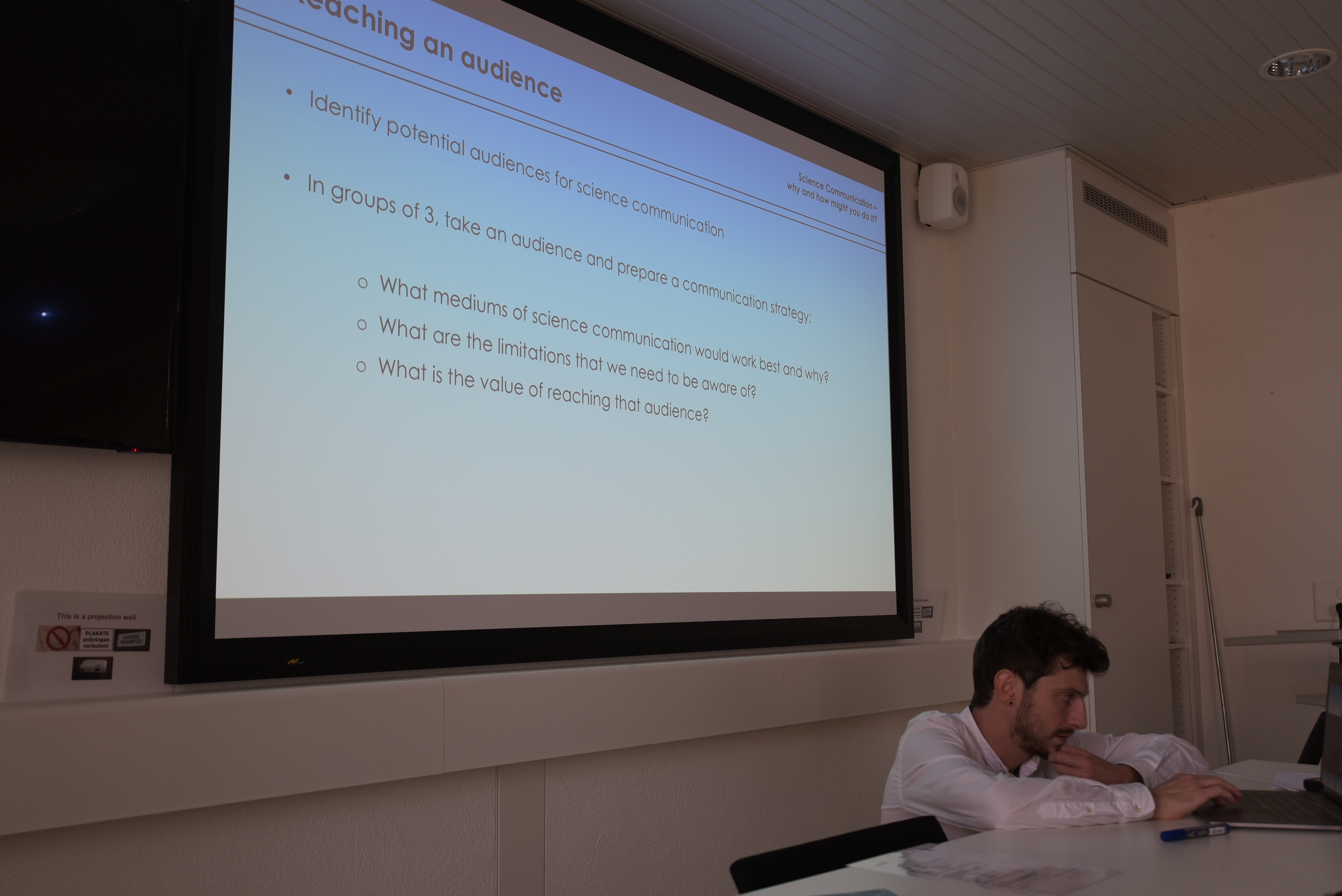
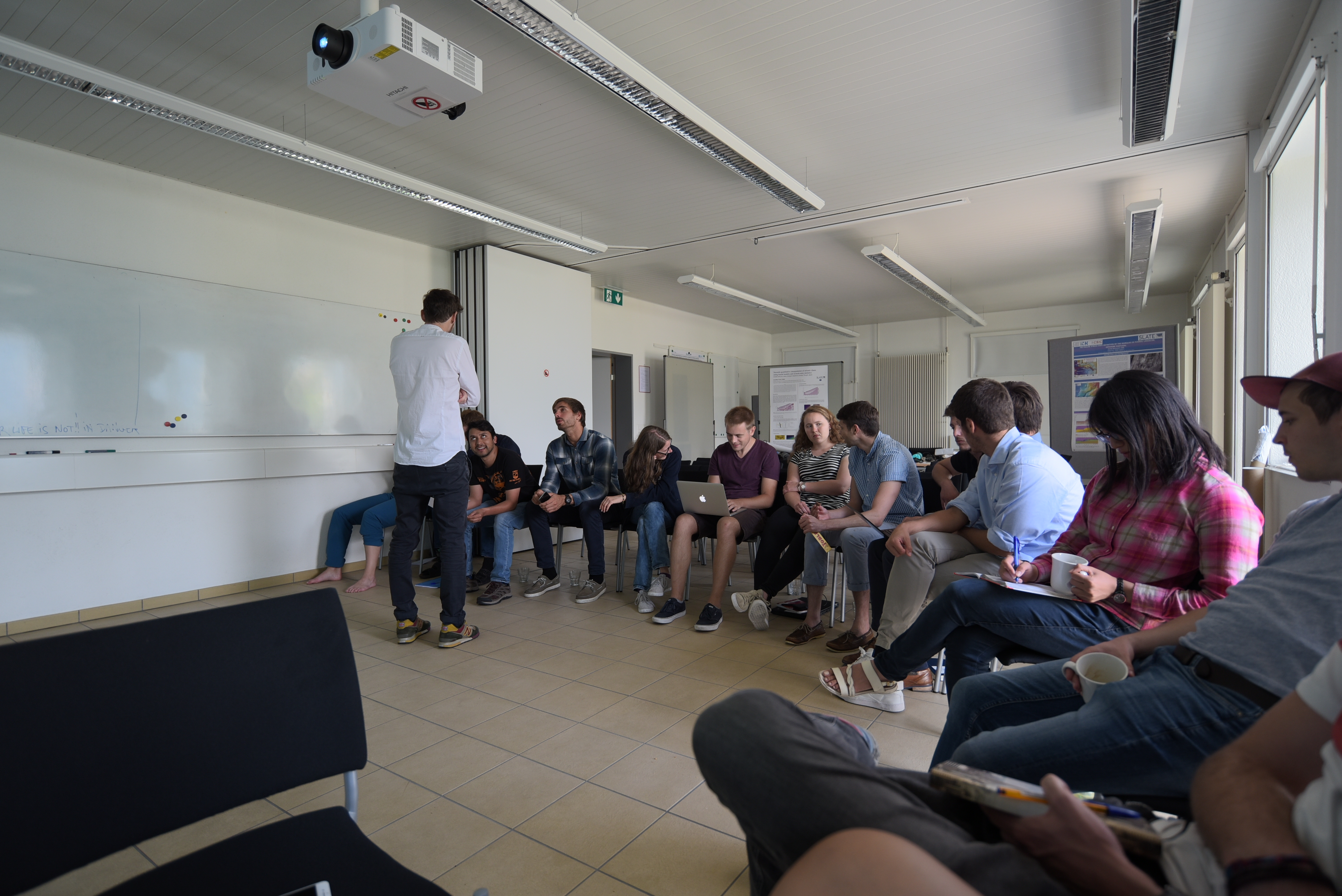
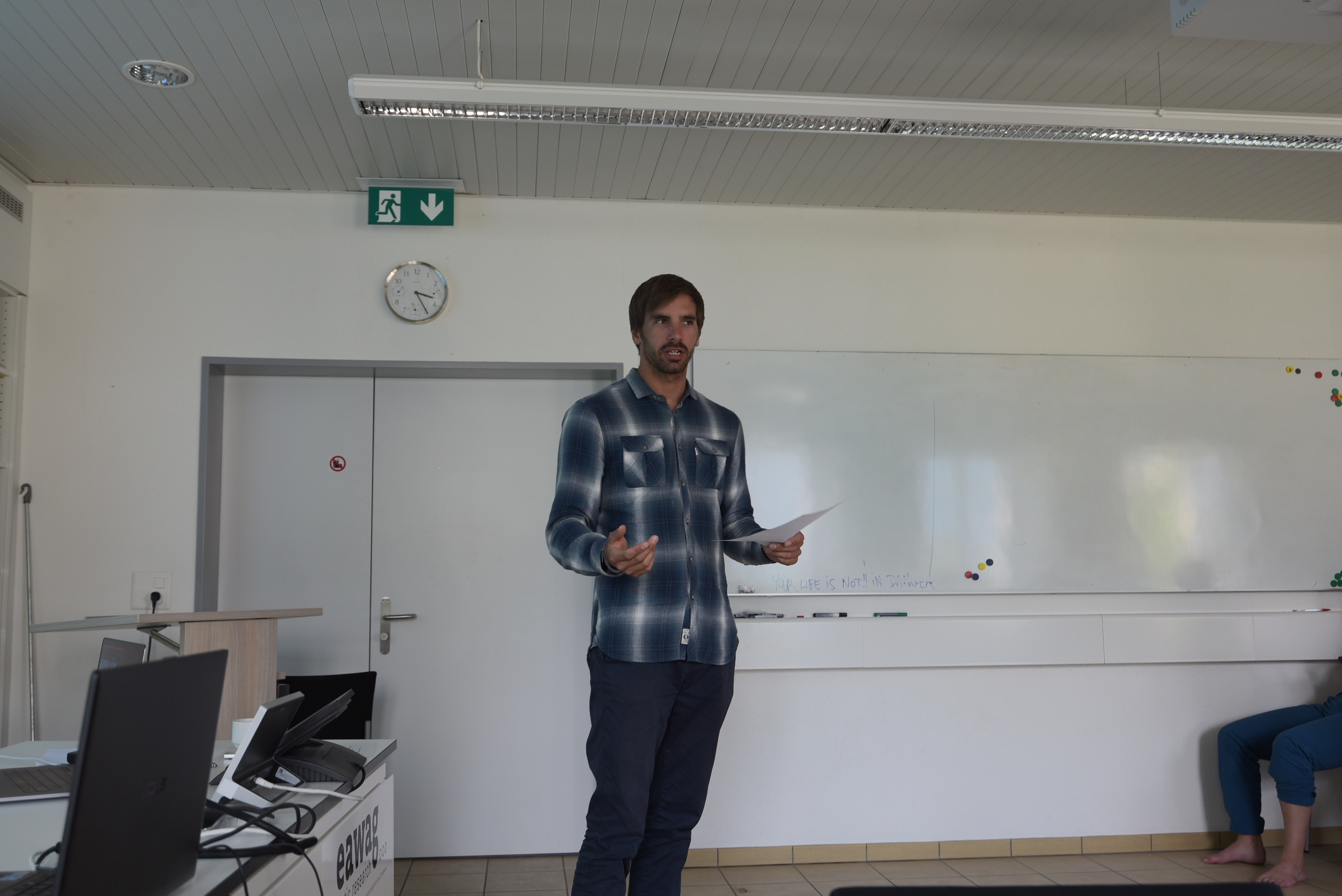
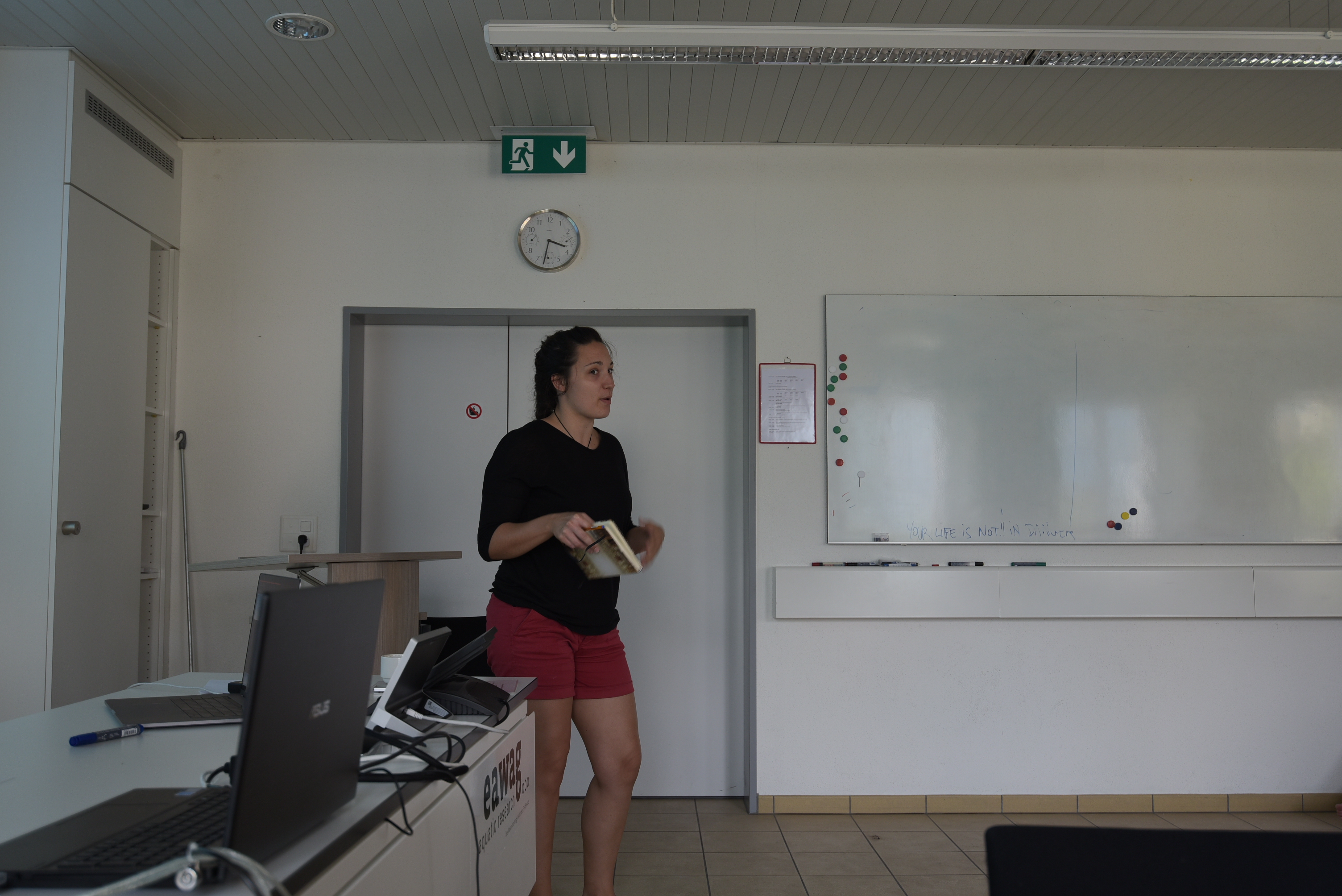
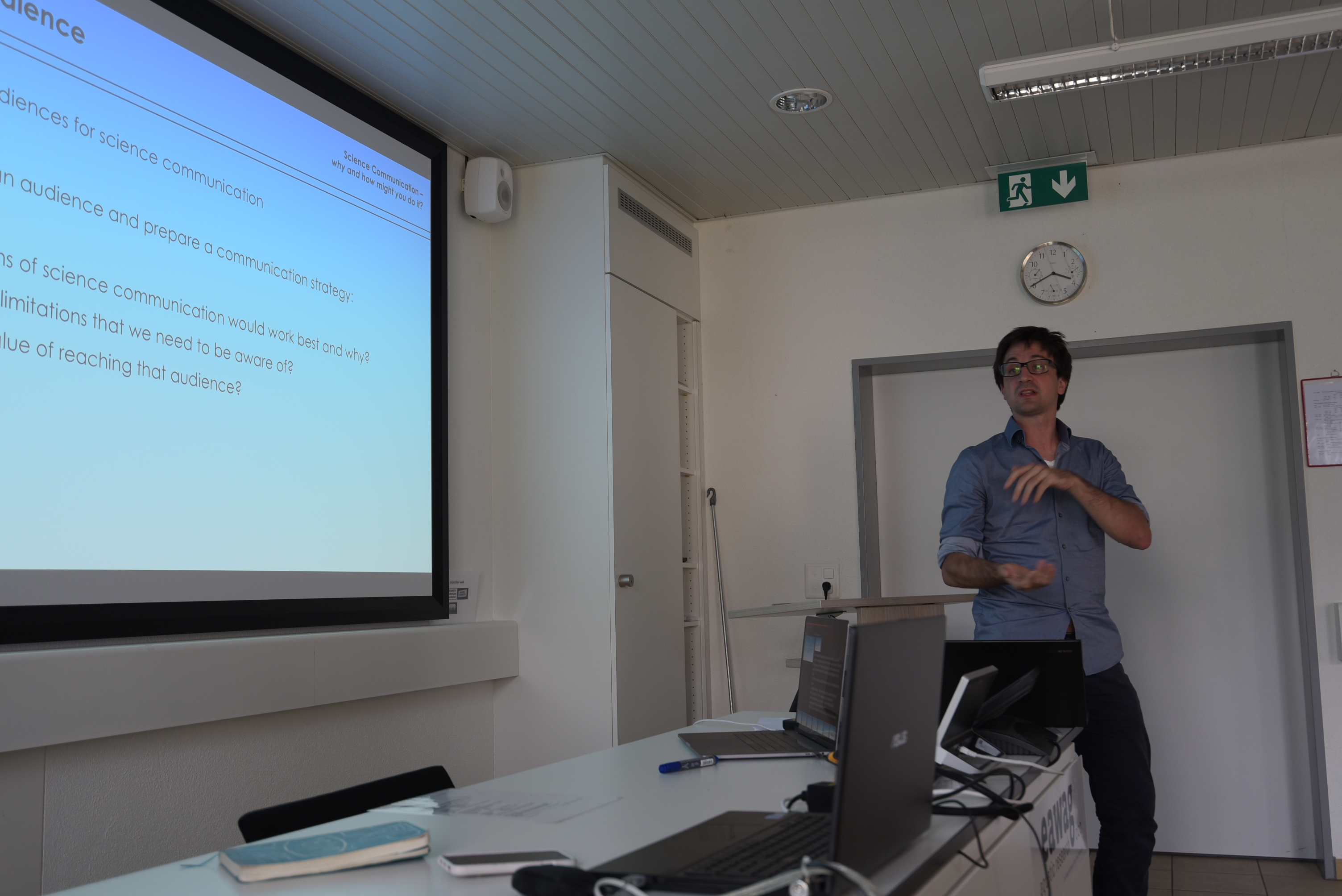
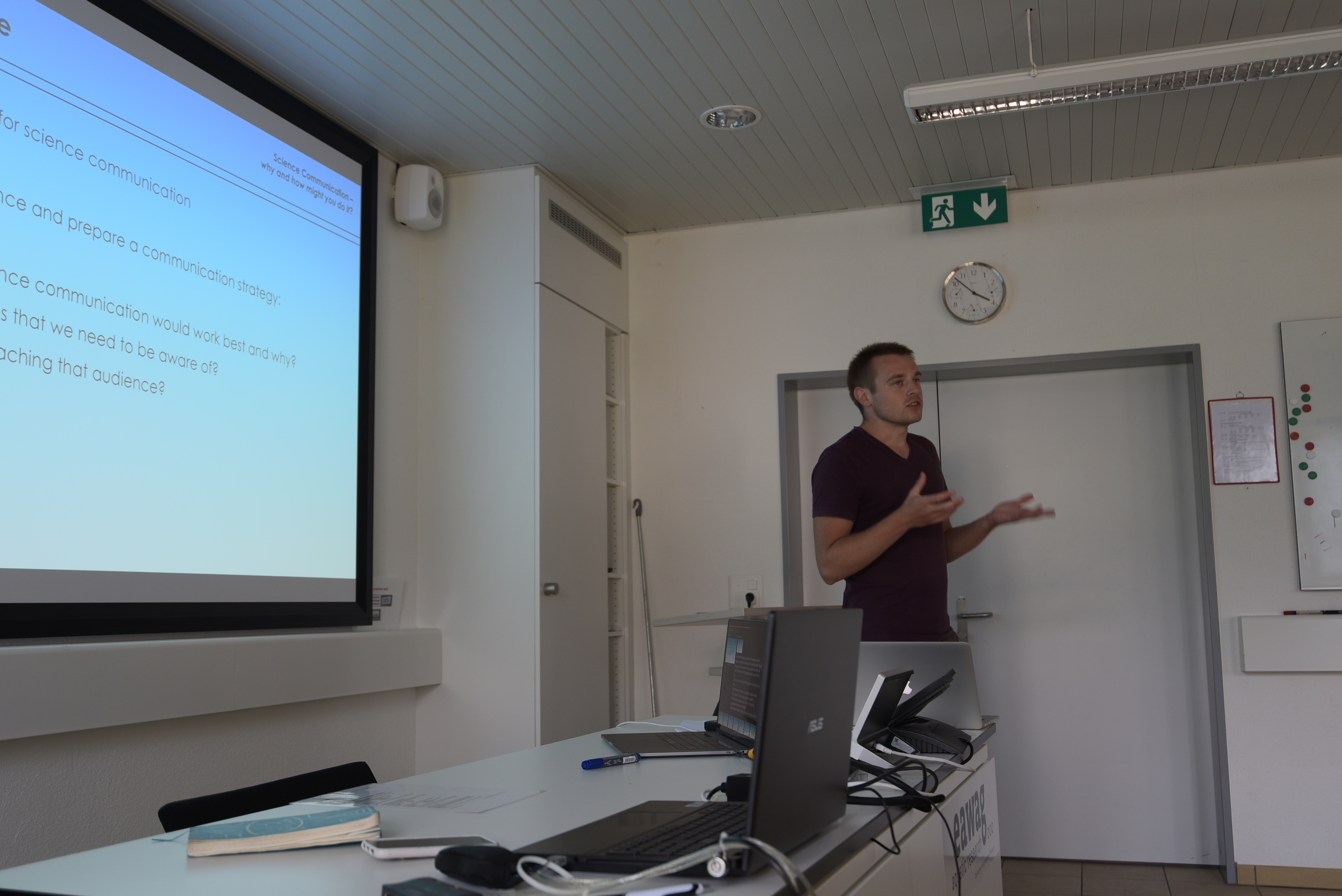
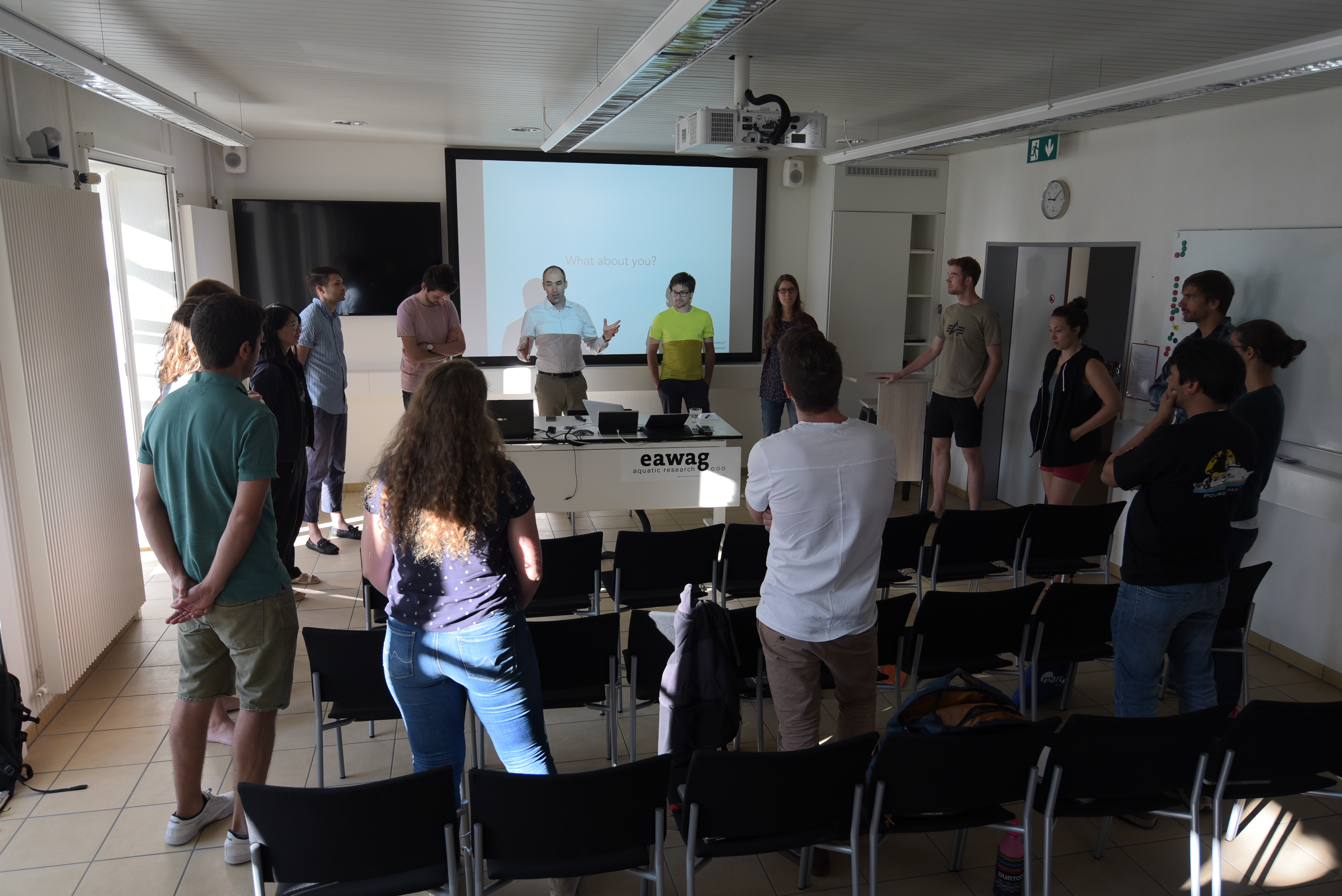
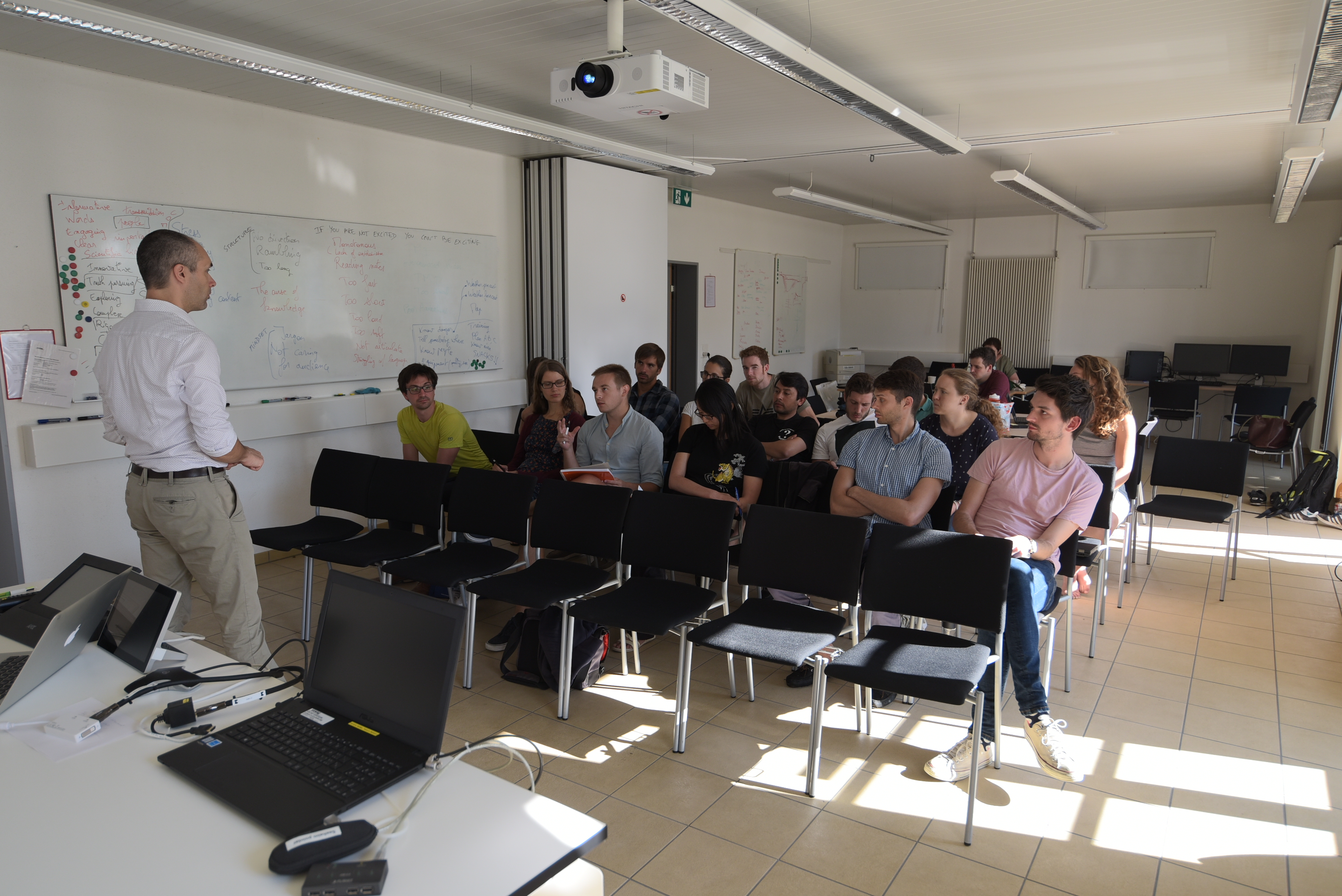
- [log-in required]
- [log-in required]
- [log-in required]
- [log-in required]
@ RV Sarmiento de Gamboa | 2018-06-18

Impressions from leg 1 of the Insight cruise
Jonathan Ford (ESR 2), Davide Mencaroni (ESR 6), William Meservy (ESR 12) | @ RV Sarmiento de Gamboa (April/May 2018)
One of the goals of SLATE is to better understand geohazards related to submarine landslides. To achieve this, the network actively promotes the exploration of marine settings and SLATE members are encouraged to take part in oceanographic research cruises. We recently participated in the INSIGHT (Leg 1) cruise onboard the Sarmiento de Gamboa alongside principal investigators Eulália Gracia and Roger Urgeles.
The general objective of INSIGHT is to image and sample the seafloor and its subsurface to better understand the earthquake and tsunami hazard in the Gulf of Cadiz. To accomplish this, the Sarmiento de Gamboa was outfitted with seismic guns and streamers, sub-bottom profiler equipment, the AUV (autonomous underwater vehicle) “Abyss” from GEOMAR, and equipment to collect gravity cores of seafloor sediments.
Study areasThe cruise departed from Vigo, Spain on 29th April and spent several days at each area of interest collecting data:
Marques de Pombal Fault ZoneAn active thrust fault thought to be responsible for the 1755 Lisbon earthquake and resulting tsunami. This area is thought to have a particularly high submarine landslide hazard as there is evidence of repeated slope failure associated with the fault in the recent geologic record.
Lineament South (west)The west side of Lineament South, which marks the Eurasian - African plate boundary, was imaged and cored at several locations. Lineament South trends WNW-ESE and is a 3-6 km wide, dextral, strike-slip fault extending the length of the Gulf of Cadiz and cutting the entire sedimentary sequence, as well as separating two different types of oceanic crust. Portions of its western half that were previously explored during other campaigns found the formation of gas hydrates and presence of mud volcanoes: evidence of fluids rising from depth.
Lineament South (east)Close to the coast of Morocco, the eastern half of Lineament South traverses the accretionary wedge where the Eurasian plate subducts under the African plate. Additionally, just north of the fault, two large mud volcanoes and associated radial landslides were surveyed by the AUV.
Portimao BankA Mesozoic-aged, inverted half-graben that is flanked by multiple submarine landslides on its south side. These slides may be associated with the upwelling of a large, evaporitic dome structure called the Don Carlos Diapir. The Portimao Bank seamount is bound by active thrust faults on its north and south ends.
Science onboardDuring the expedition, all three of us assisted with gravity core acquisition, which involved cutting, sealing, and labelling each core into 1 m sections for further examination at the University of Barcelona. Here, Davide and William ran each unopened core through a Multi-Sensor Core Logger to measure geophysical properties like density, P-wave velocity, resistivity, and magnetic susceptibility. Future analyses require the cores be split, visually described, and then stored in a refrigerated archive at the Institute of Marine Science of Barcelona.
Additionally, each of us had different roles on the vessel:
"I worked with the acoustic instrumentation. The Sarmiento de Gamboa is equipped with multibeam and Parasound echosounders that allowed us to obtain high-resolution bathymetric images (with less detail, but greater coverage than the AUV) and sub-bottom profiles of the first few metres of sediment for each area of investigation and during transits. I was responsible for data acquisition, monitoring, and maintaining the observers logs. I also experimented with some preliminary filtering on the Parasound data to improve the imaging of the stratigraphy as much as possible."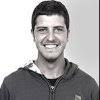 Davide Mencaroni
ESR 6
"My primary duty was to initiate and monitor the multi-channel seismic acquisition software. For each new line, after the streamers and airguns were deployed by the crew, I would initiate a “soft start” or step-by-step increase of the number of guns being fired until the entire array could be fired simultaneously every 6-7 seconds. Gradual airgun buildups like this are common protocol for seismic exploration and are done to gently warn away nearby marine mammals that may be uncomfortable with the sound of the airguns. After the airguns were fully engaged, my responsibilities would shift to ensuring that the ship was on course and initiating, monitoring, and occasionally trouble-shooting the acquisition software."
Davide Mencaroni
ESR 6
"My primary duty was to initiate and monitor the multi-channel seismic acquisition software. For each new line, after the streamers and airguns were deployed by the crew, I would initiate a “soft start” or step-by-step increase of the number of guns being fired until the entire array could be fired simultaneously every 6-7 seconds. Gradual airgun buildups like this are common protocol for seismic exploration and are done to gently warn away nearby marine mammals that may be uncomfortable with the sound of the airguns. After the airguns were fully engaged, my responsibilities would shift to ensuring that the ship was on course and initiating, monitoring, and occasionally trouble-shooting the acquisition software."
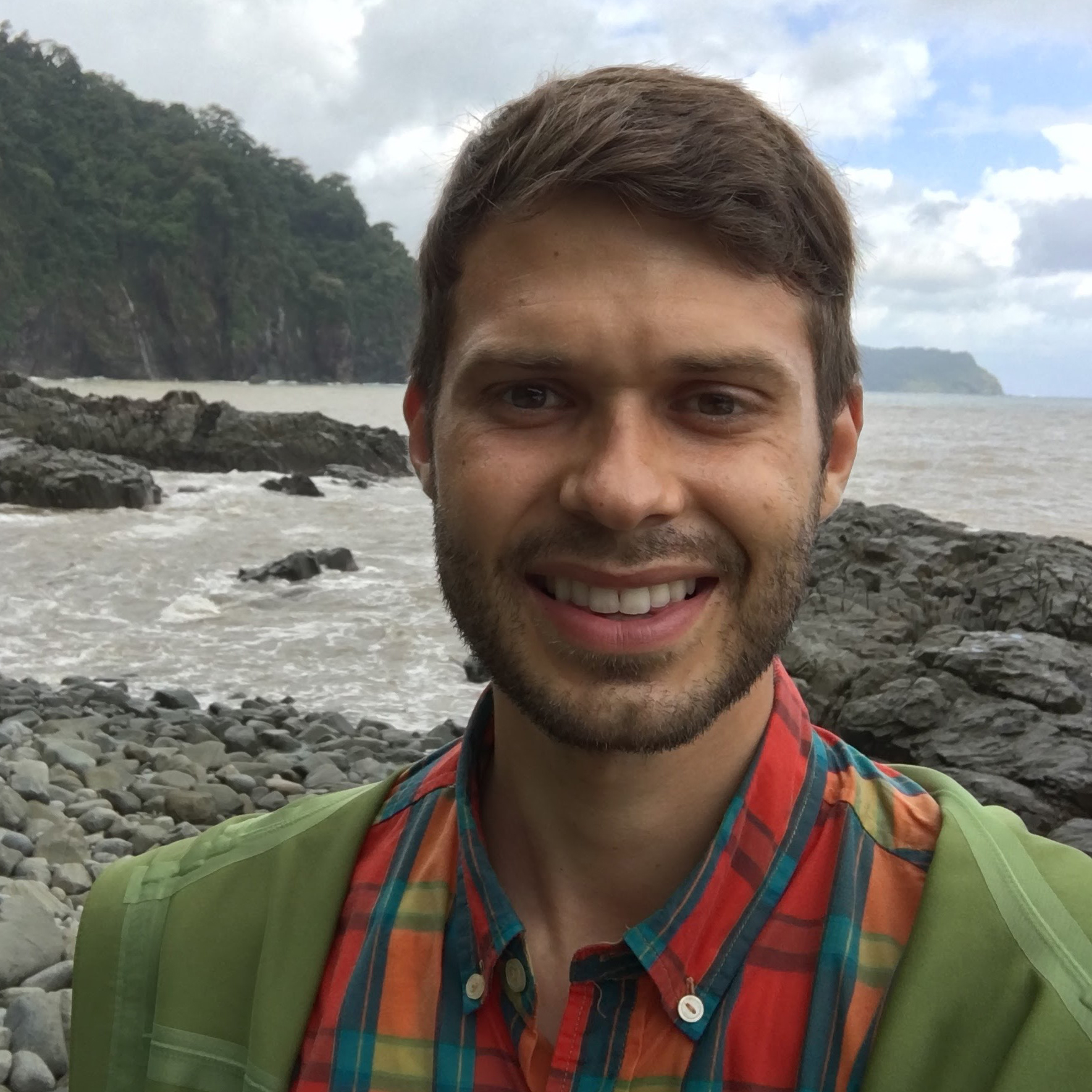 William Meservy
ESR 12
"My role onboard was as part of the seismic processing team. Multi-channel seismic data are processed immediately after acquisition to check for data problems and ensure that targets have been imaged correctly. The main tasks onboard are i) QC and smoothing of the GPS navigation ii) QC of raw field records, noting the amount and types of noise present in the data iii) basic processing, including an initial pass of velocity analysis and migration. A more detailed processing flow will be applied onshore to further improve the image."
William Meservy
ESR 12
"My role onboard was as part of the seismic processing team. Multi-channel seismic data are processed immediately after acquisition to check for data problems and ensure that targets have been imaged correctly. The main tasks onboard are i) QC and smoothing of the GPS navigation ii) QC of raw field records, noting the amount and types of noise present in the data iii) basic processing, including an initial pass of velocity analysis and migration. A more detailed processing flow will be applied onshore to further improve the image."
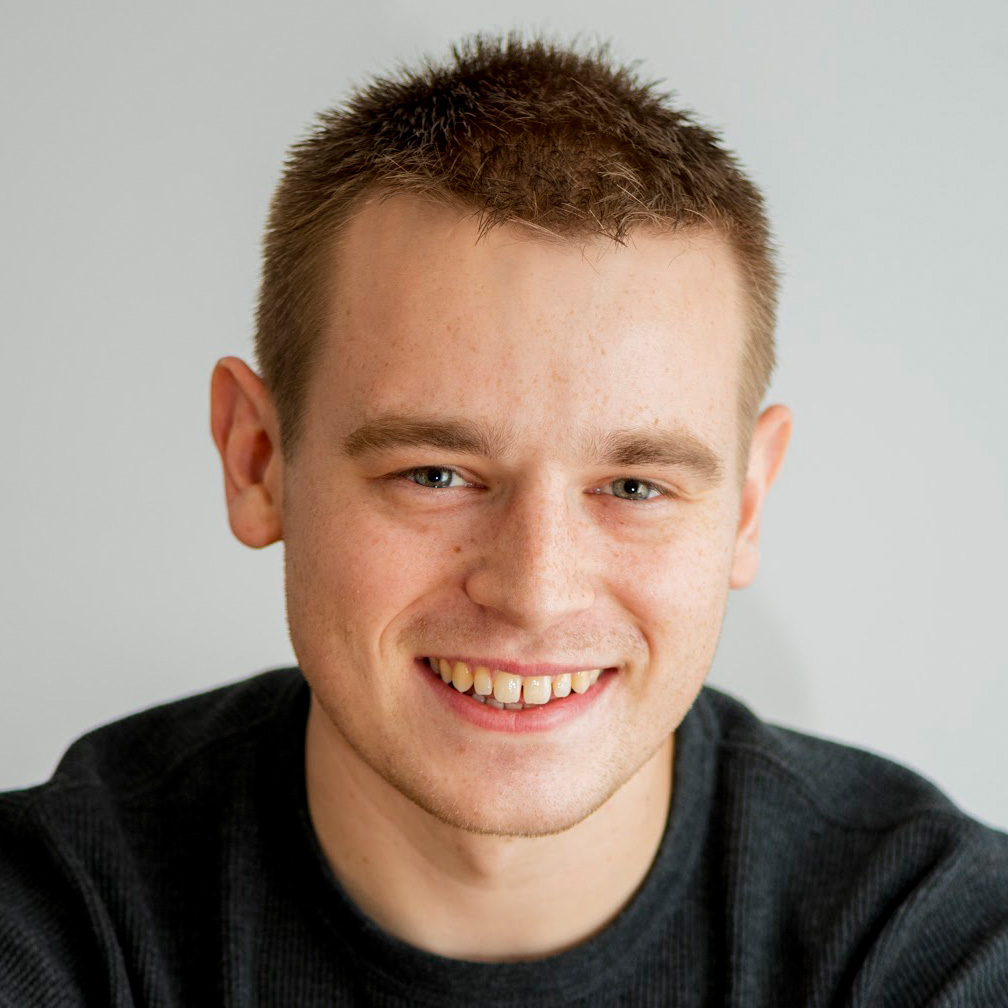 Jonathan Ford
ESR 2
Scientific impact
Jonathan Ford
ESR 2
Scientific impact
Enjoying generally good weather conditions and no major technical problems during the cruise contributed to the successful acquisition of a significant amount of new data. These include >1000 km of high resolution 2D multi-channel seismic lines and sub-bottom profiles, >100 km2 of high resolution AUV bathymetry, and 16 gravity cores. These data will be used by scientists who took part in the expedition for a wide variety of projects, including research related to seismic risk assessment on active faults, submarine slope stability, mud volcanoes, and environmental reconstruction based on deep-water corals.
For the SLATE network specifically, this campaign has been crucial for collecting data to be used in the study of the Marques de Pombal landslide (ESR6), for the creation of a landslides catalog in the Southwestern Iberian Margin (ESR12), and for new high-resolution seismic images of internal structure within submarine landslide deposits (ESR2).
Work areas- Marques de Pombal Fault Zone
- Lineament South (west)
- Lineament South (east)
- Portimao Bank
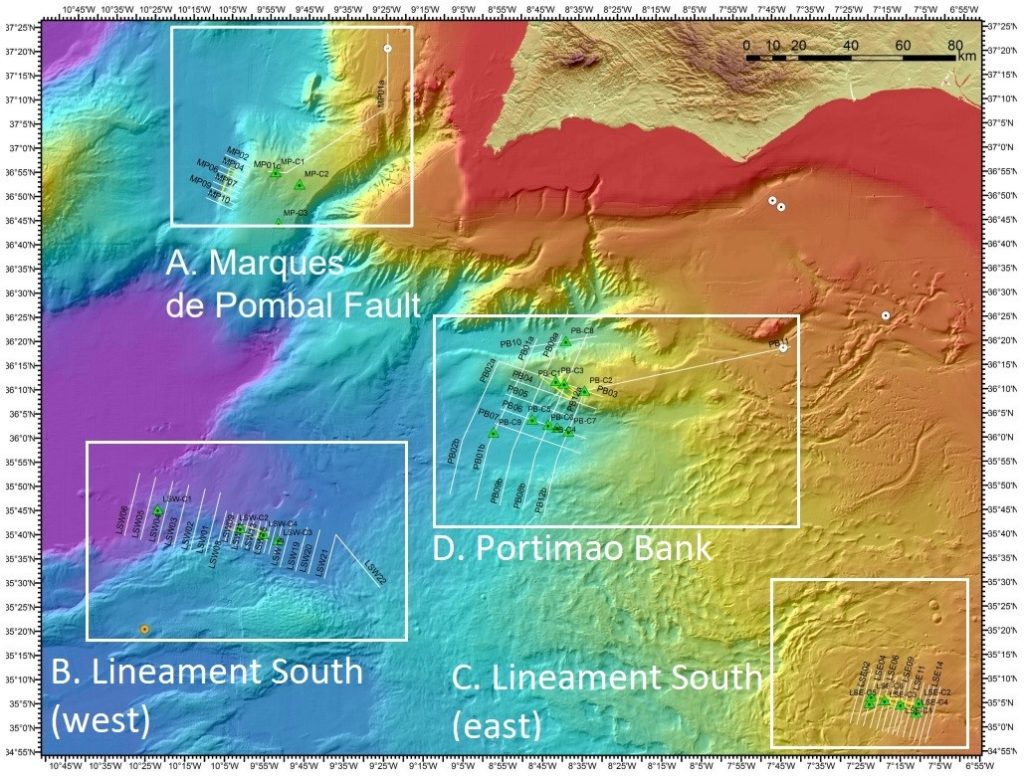 Vessel
Impressions
Vessel
Impressions
